Just a Few Seconds – art book
Details
The Hague University of Applied Sciences is perhaps not the most obvious place to come across an art collection, but in the momentary daily encounters with works of art that take place here, more happens than one might expect. The art provides food for thought, offers a different view on the world, and invites you to slow down for a moment. From the conversations we had with employees and students during the making of this book, we also discovered that the art collection can even make you feel welcome at THUAS. During those brief encounters, those few moments of contemplation, a real connection is formed between the works of art and the staff and students of the college.
The Just a Few Seconds book is a way of honouring those brief encounters.
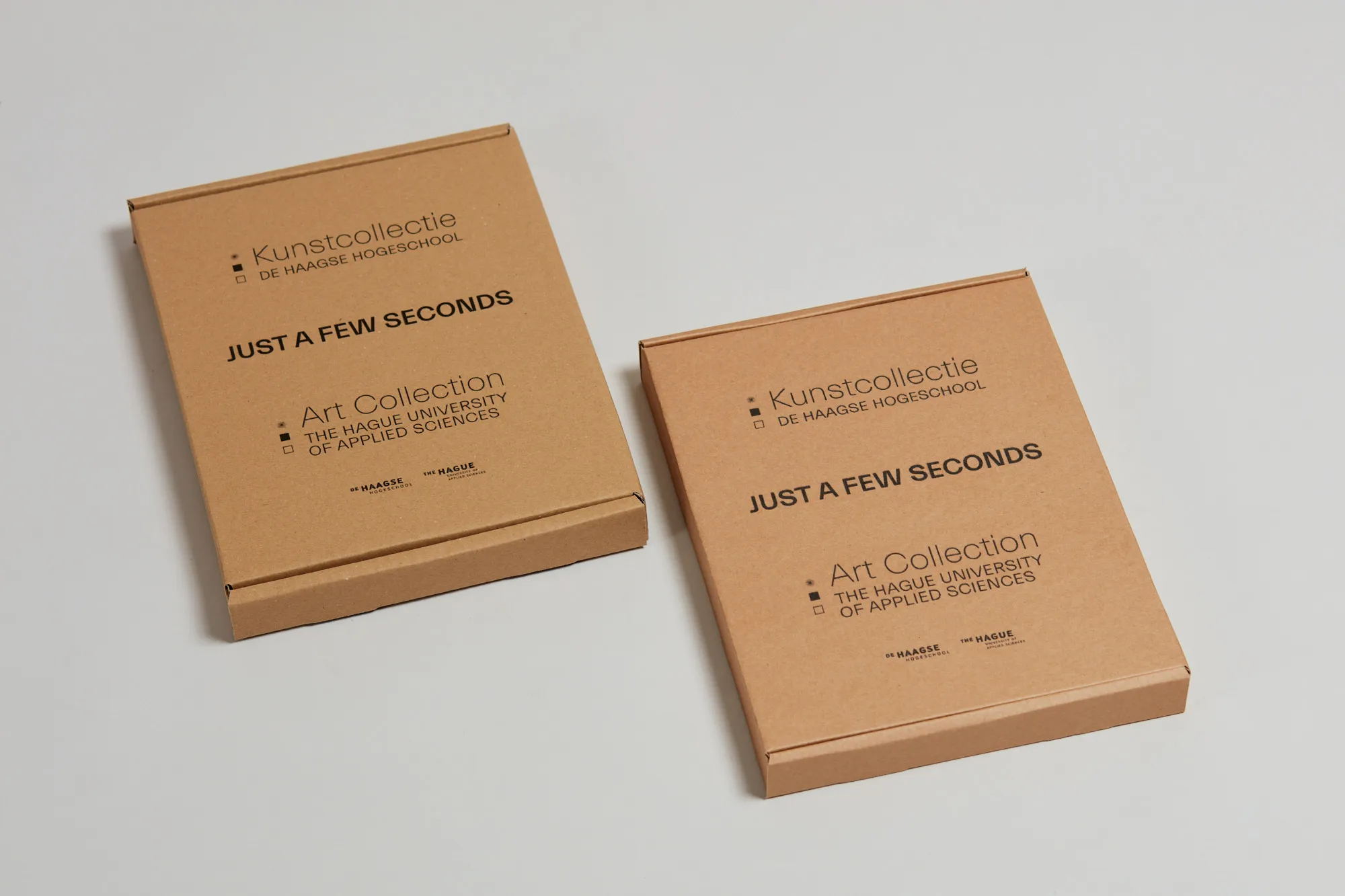
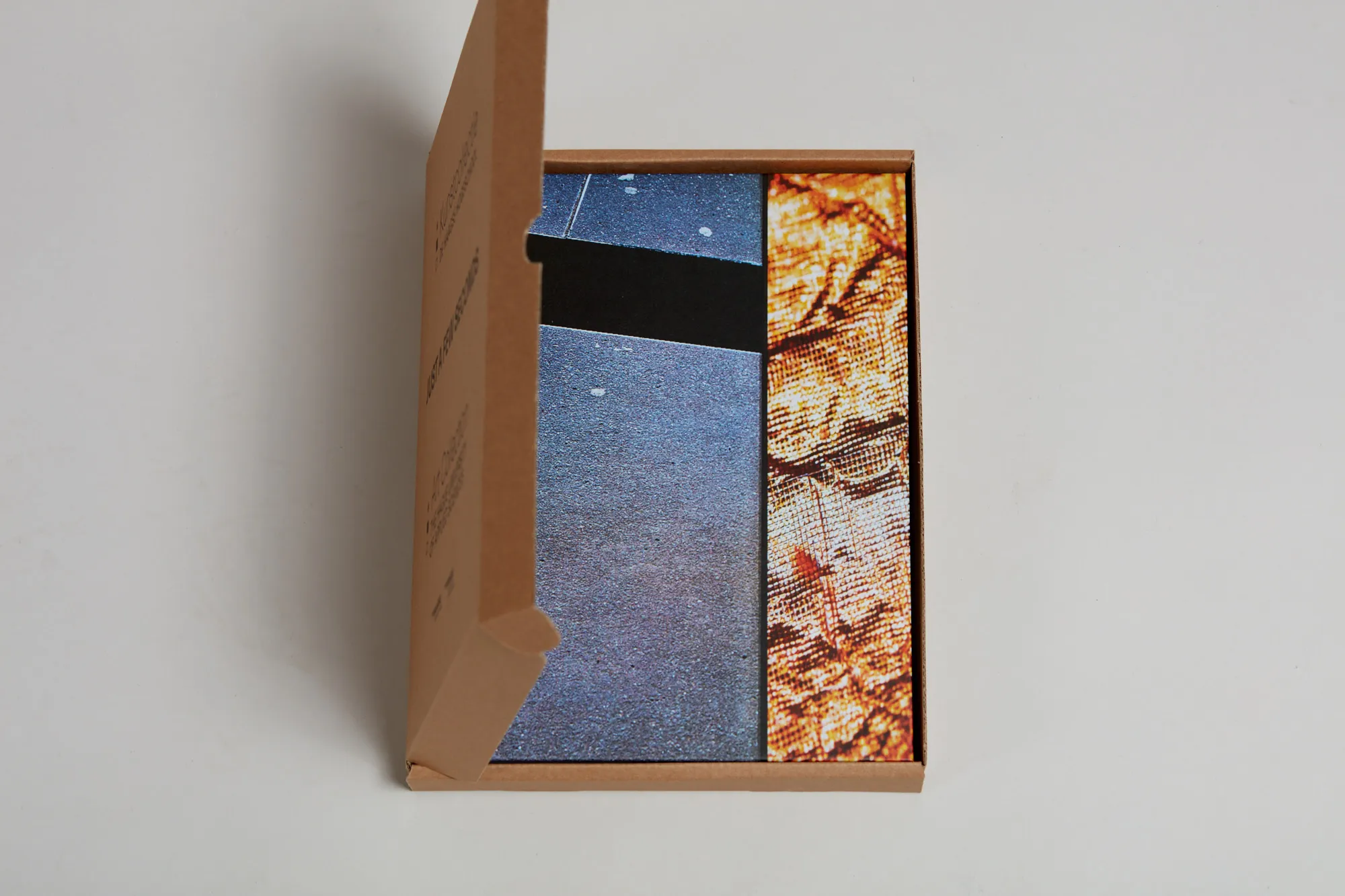
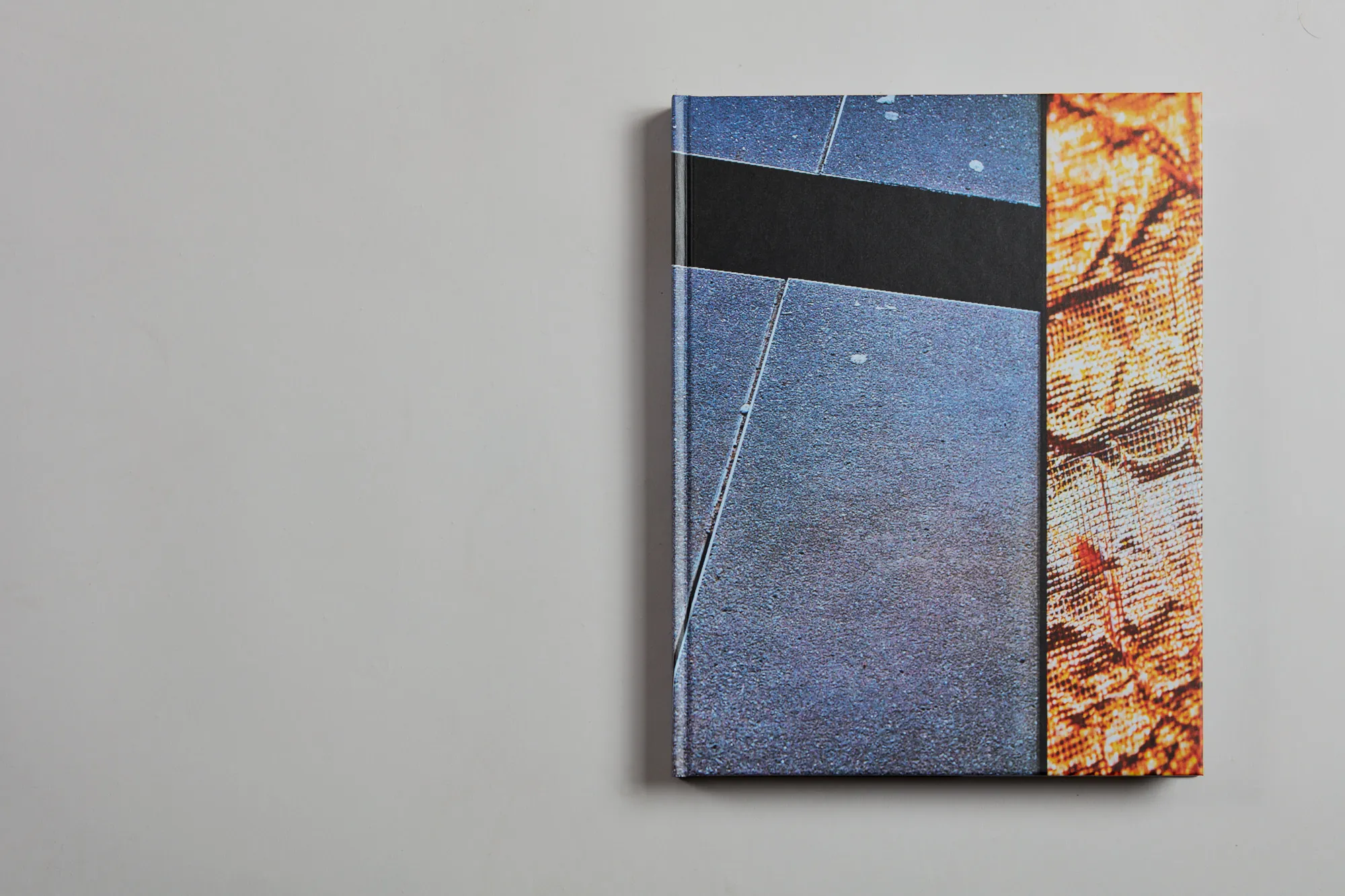

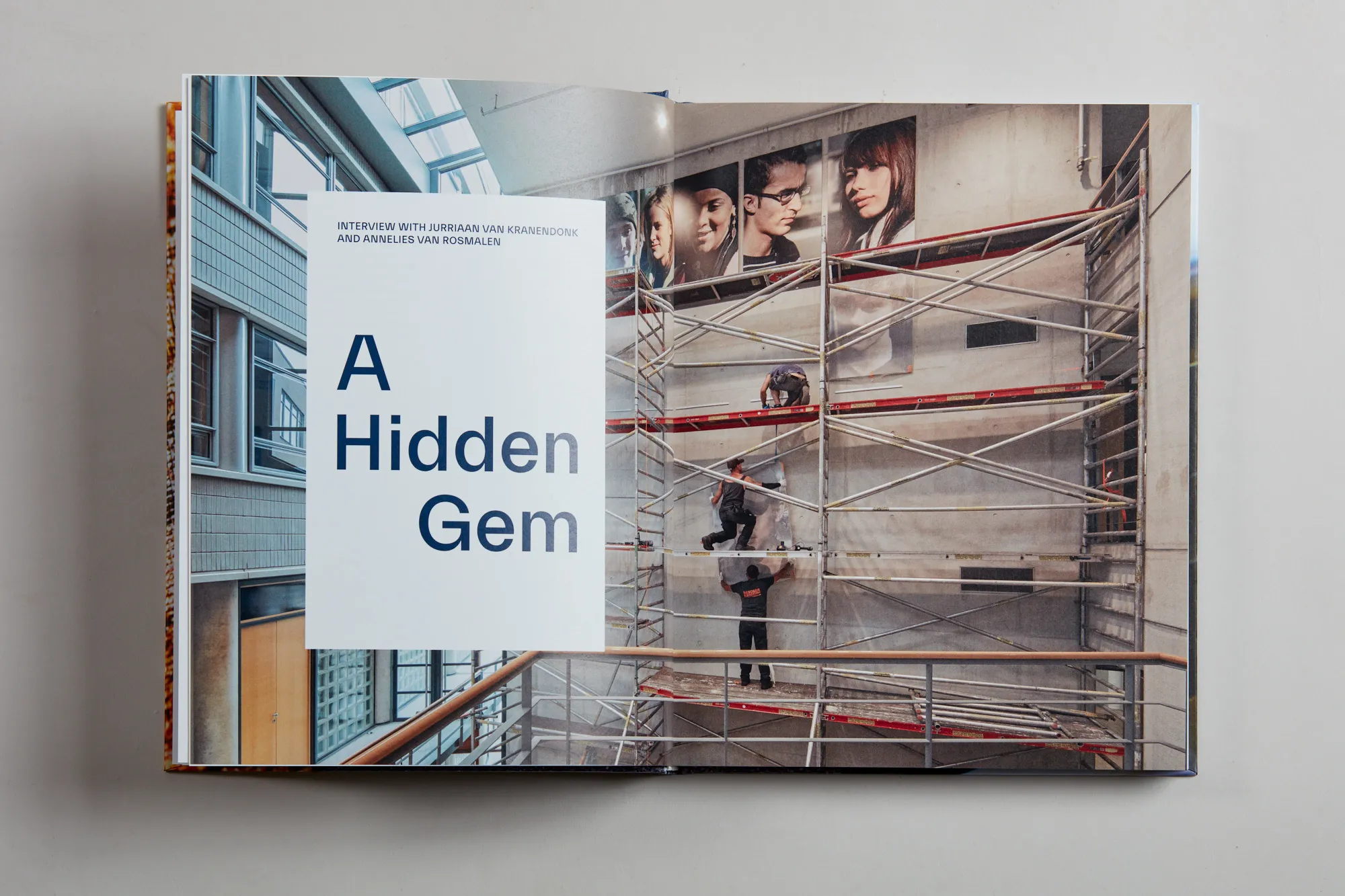
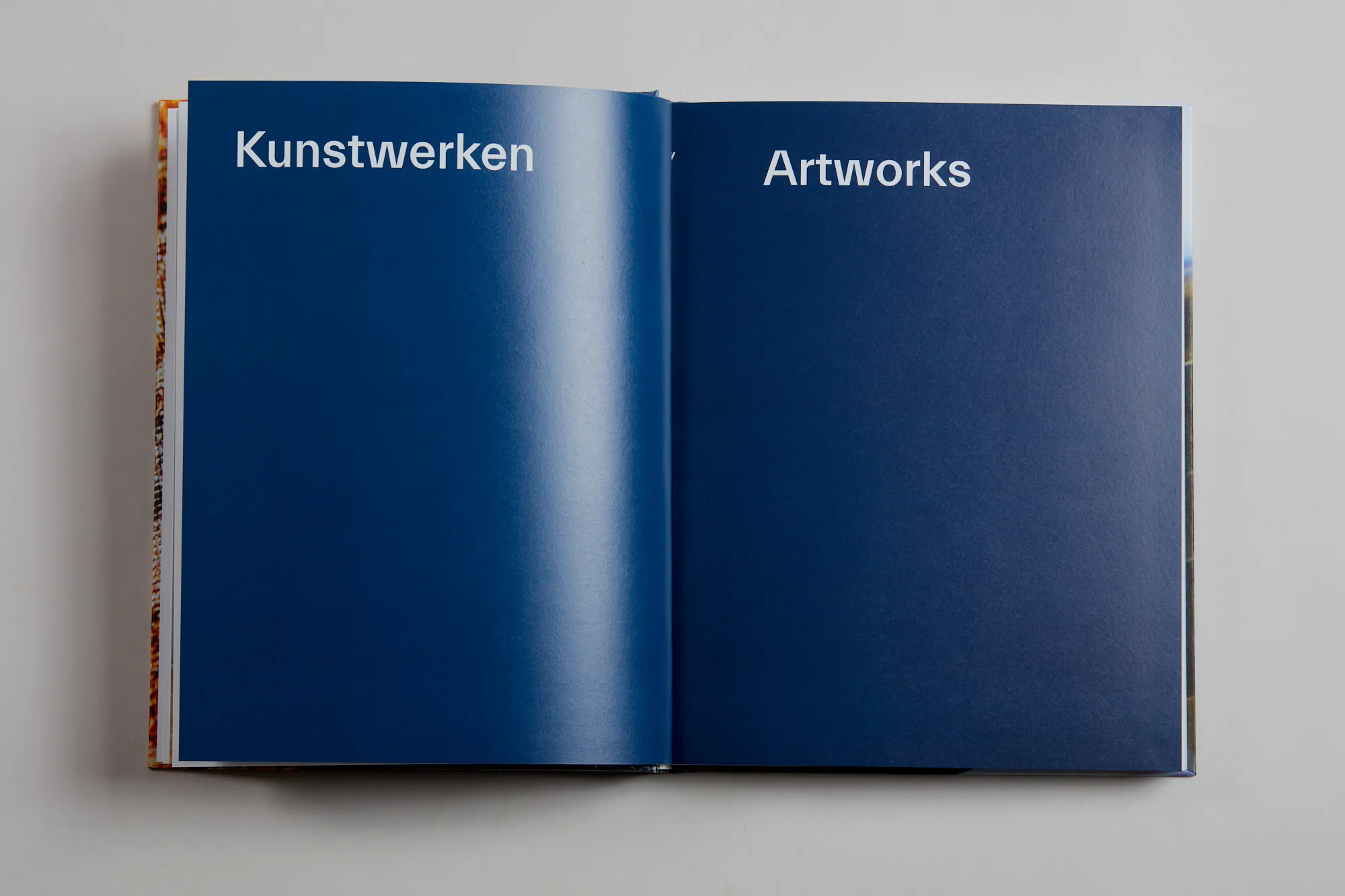
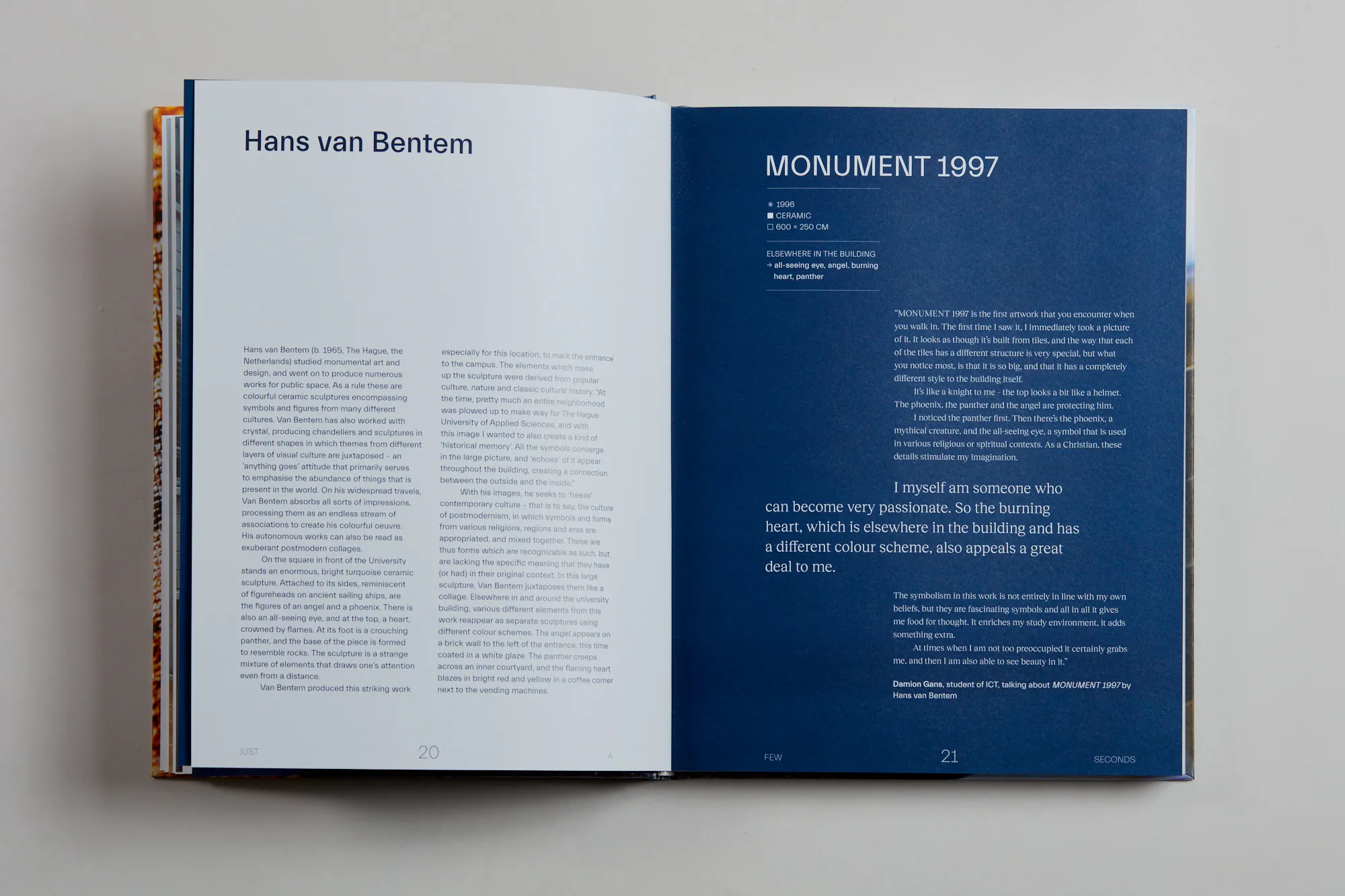
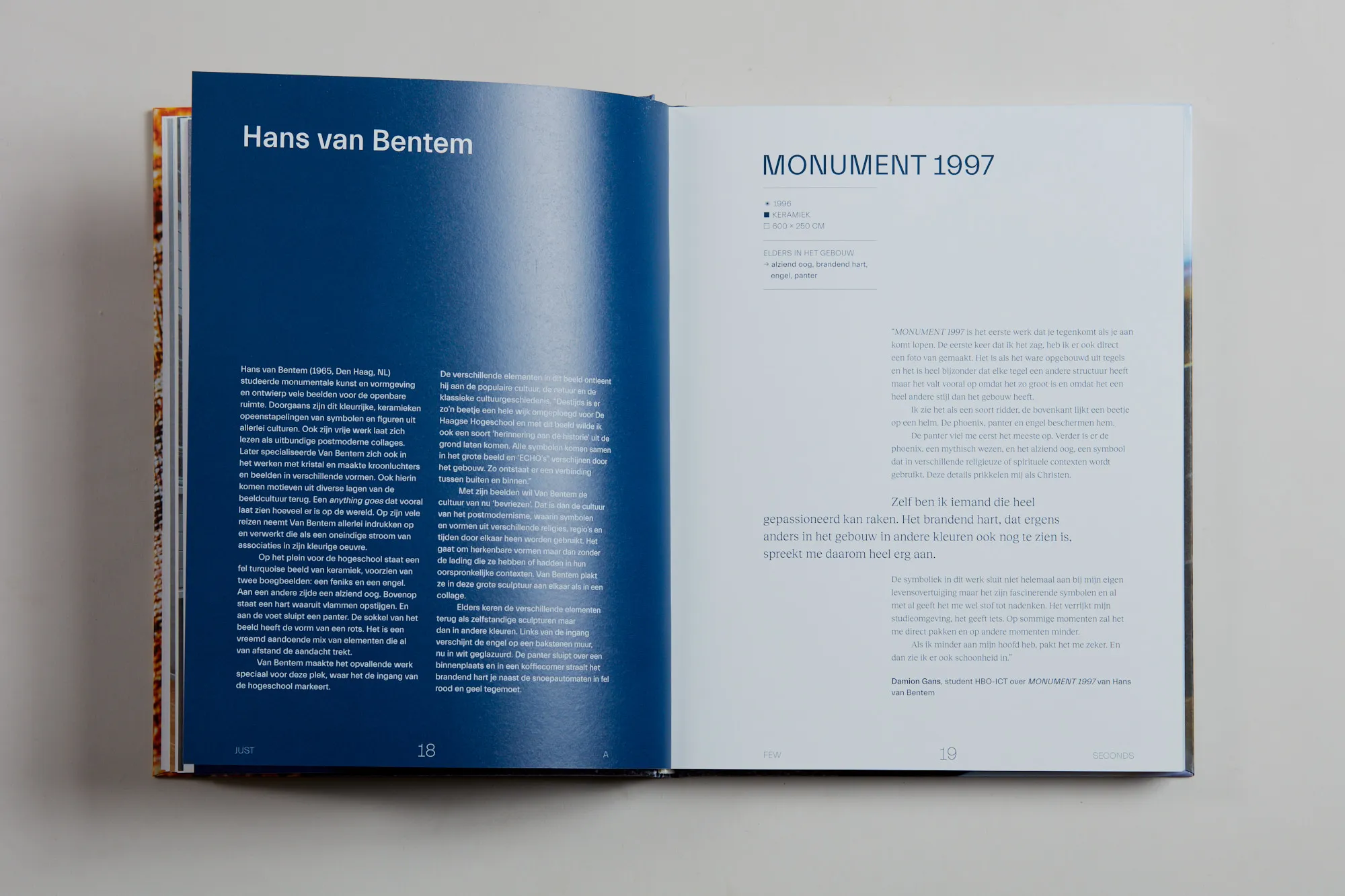
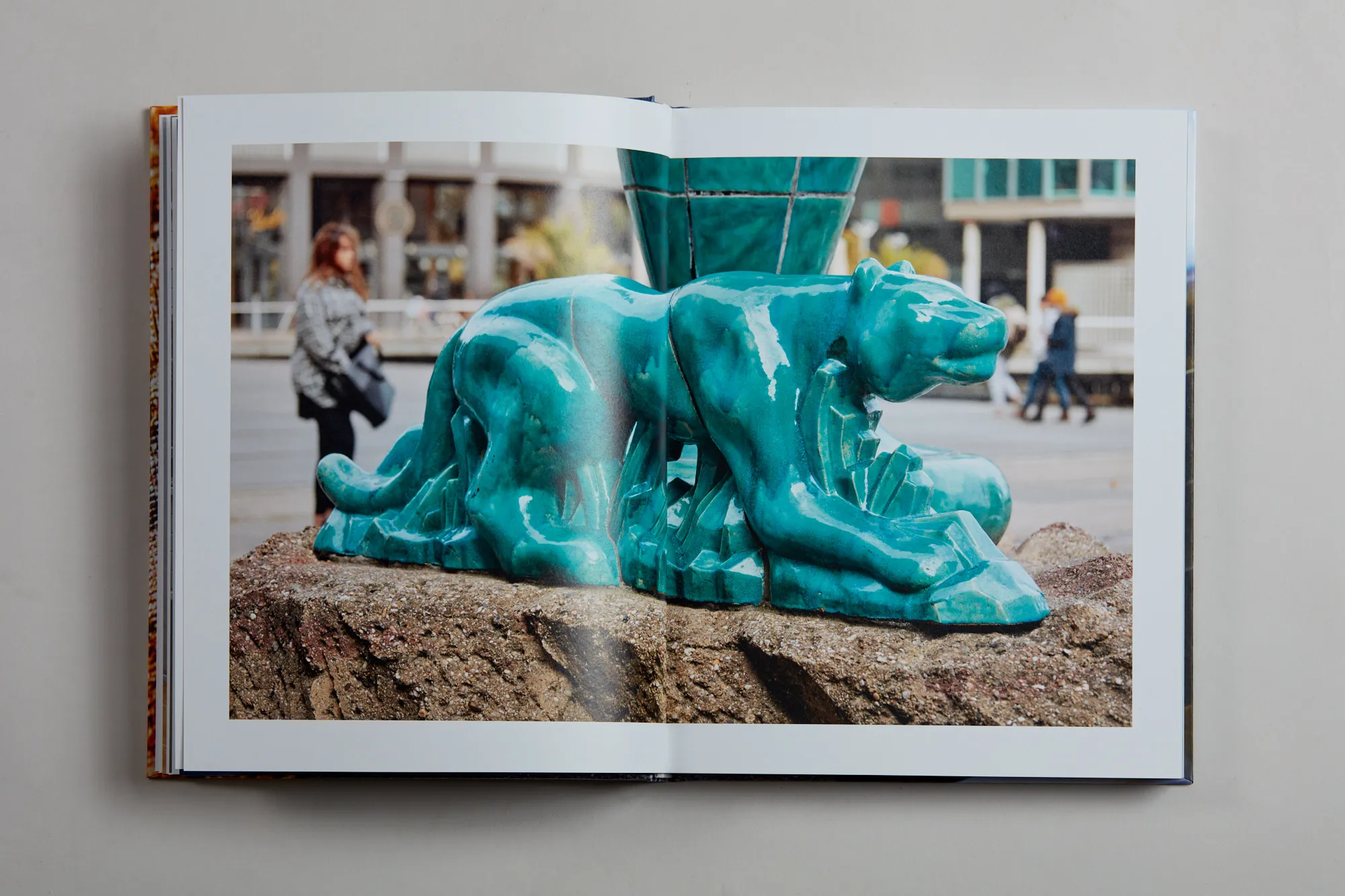
“Vase is the first artwork that you encounter when you walk in. The first time I saw it, I immediately took a picture of it. It looks as though it’s built from tiles, and the way that each of the tiles has a different structure is very special, but what you notice most, is that it is so big, and that it has a completely different style to the building itself. I didn’t immediately connect it to the idea of a vase, it’s more like a knight – the top looks a bit like a helmet. If you start seeing it as a vase then it takes on a certain fragility. The phoenix, the panther and the angel are protecting it. I noticed the panther first. Then there’s the phoenix, a mythical creature, which could also be viewed within Christian tradition, and the all-seeing eye is another symbol that is used in various religious or spiritual contexts. As a Christian, these details stimulate my imagination. I myself am someone who can become very passionate. So the work Burning Heart, which is elsewhere in the building and has a different colour scheme, also appeals a great deal to me.
The symbolism in this work is not entirely in line with my own beliefs, but they are fascinating symbols and all in all it gives me food for thought. It enriches my study environment, it adds something extra. At times when I am not too preoccupied it certainly grabs me, and then I am also able to see beauty in it.”Damion Gans, student of ICT, talking about Vase by Hans van Bentem
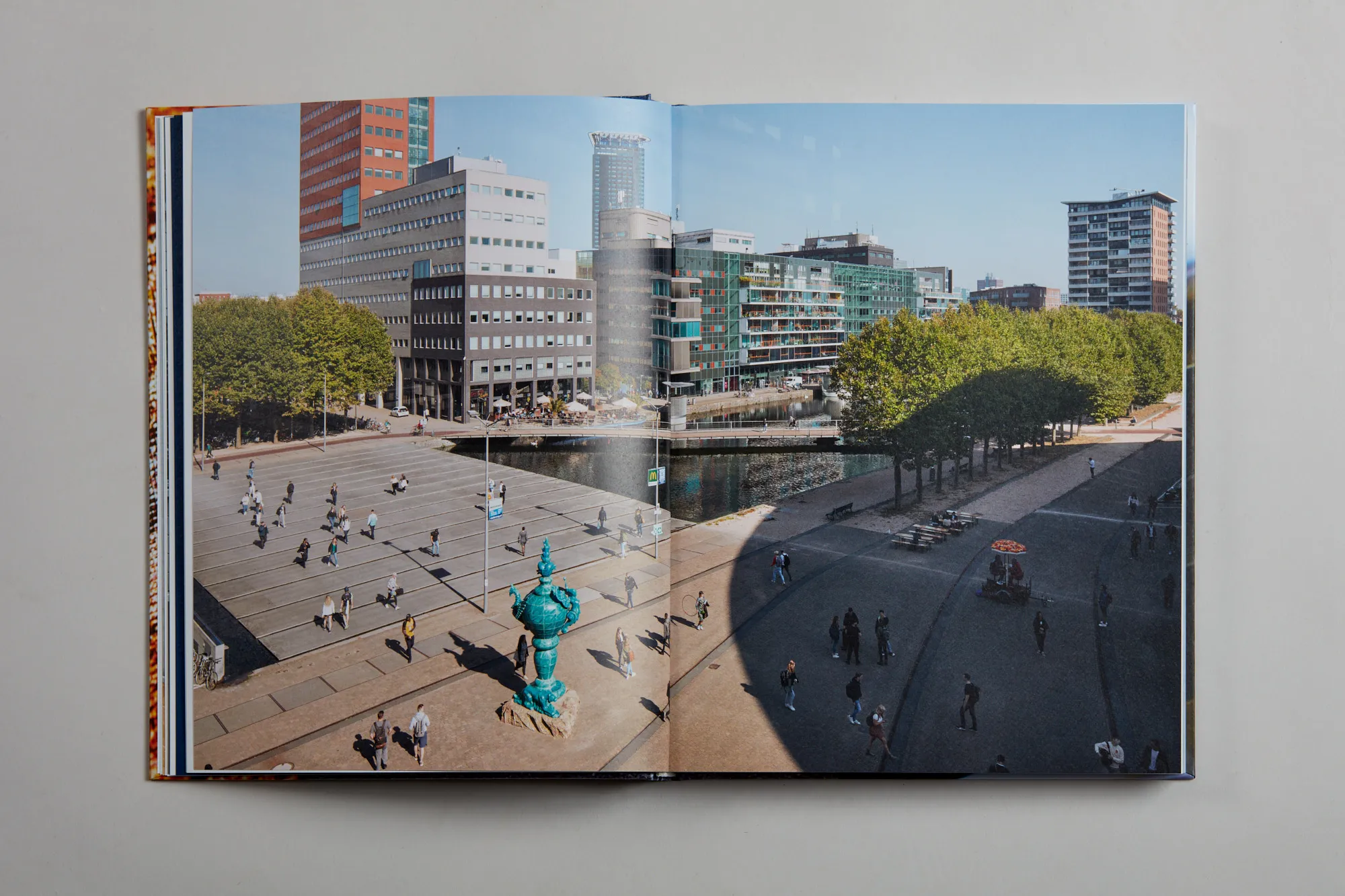

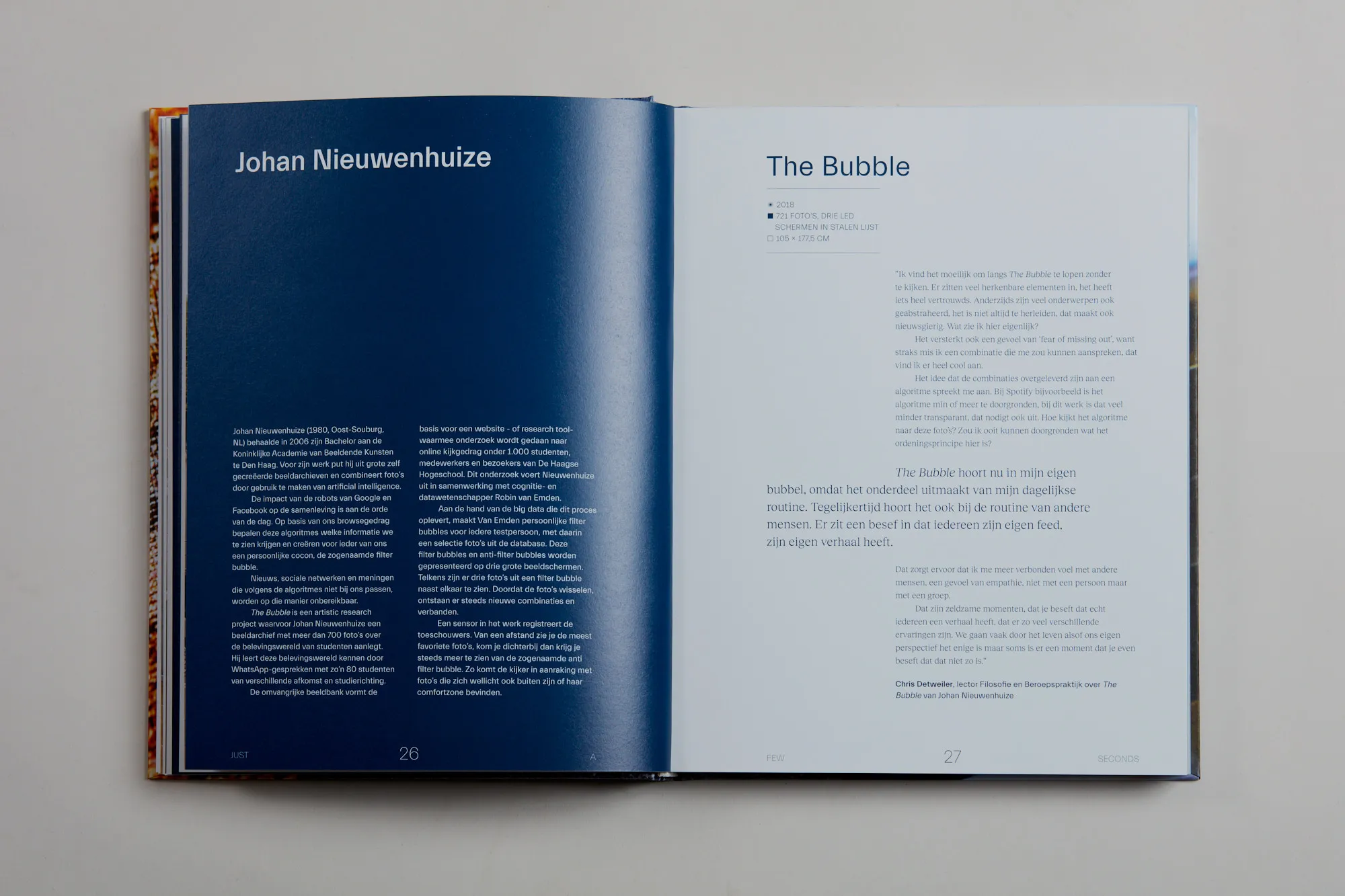
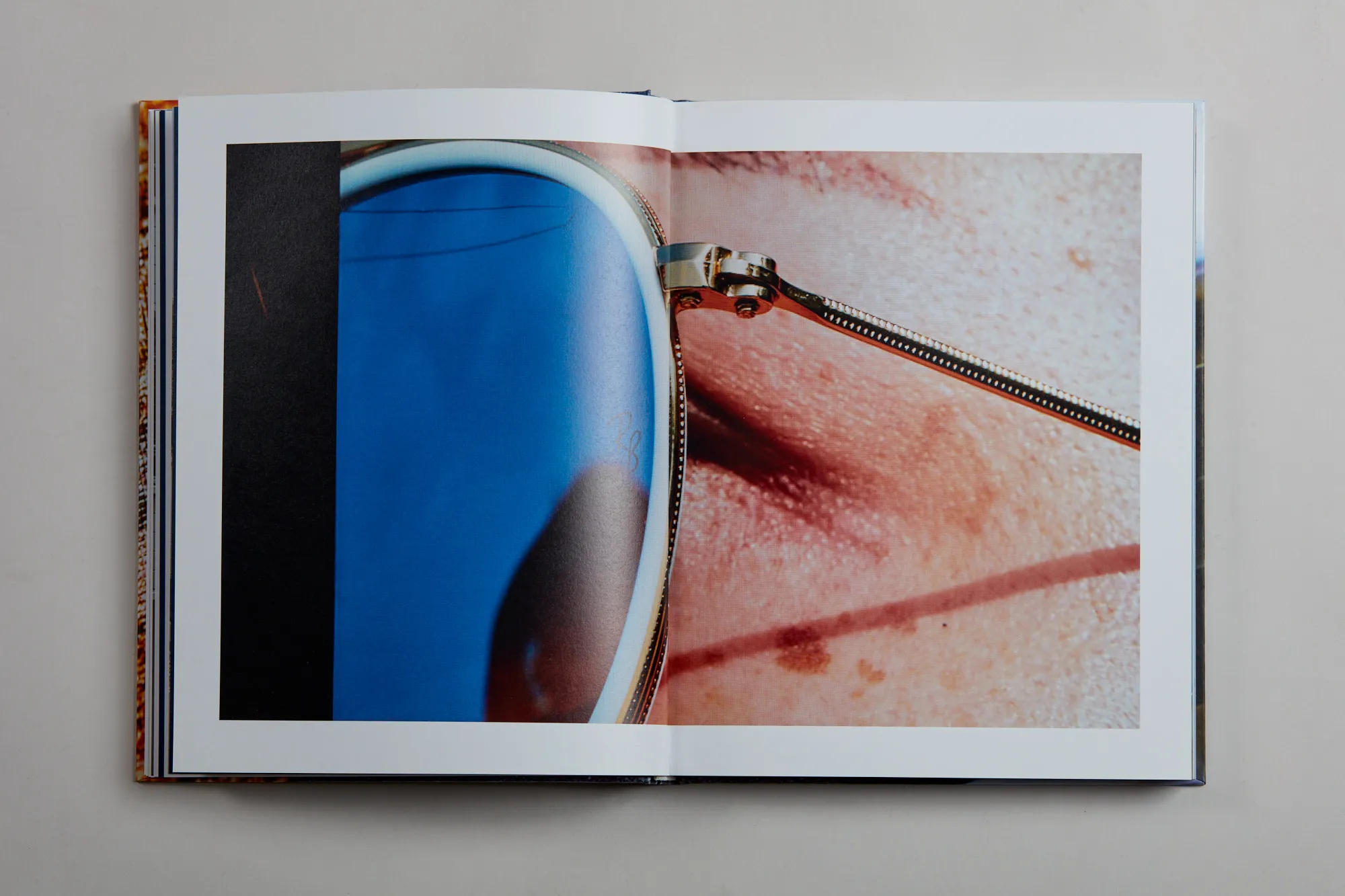
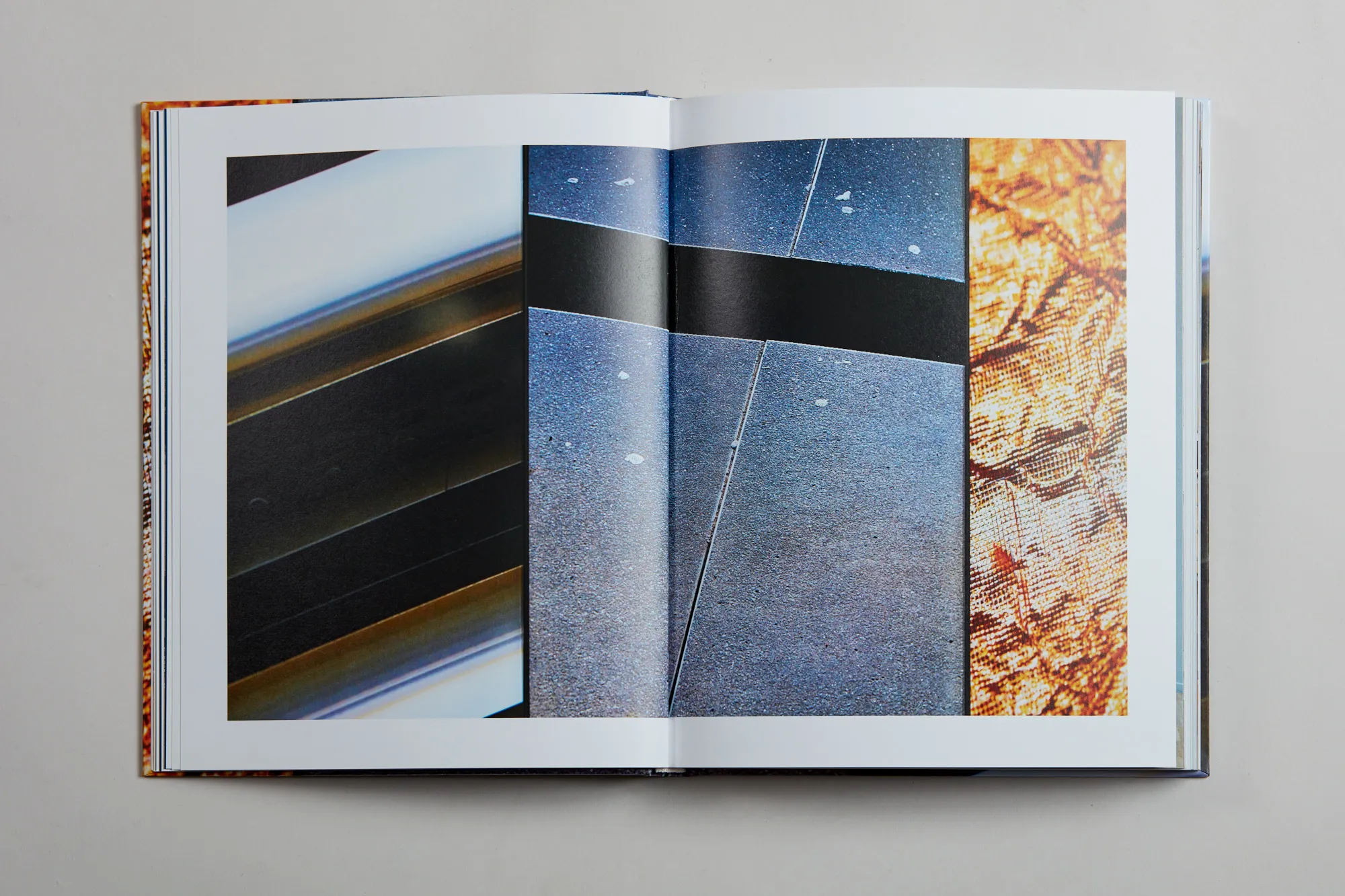
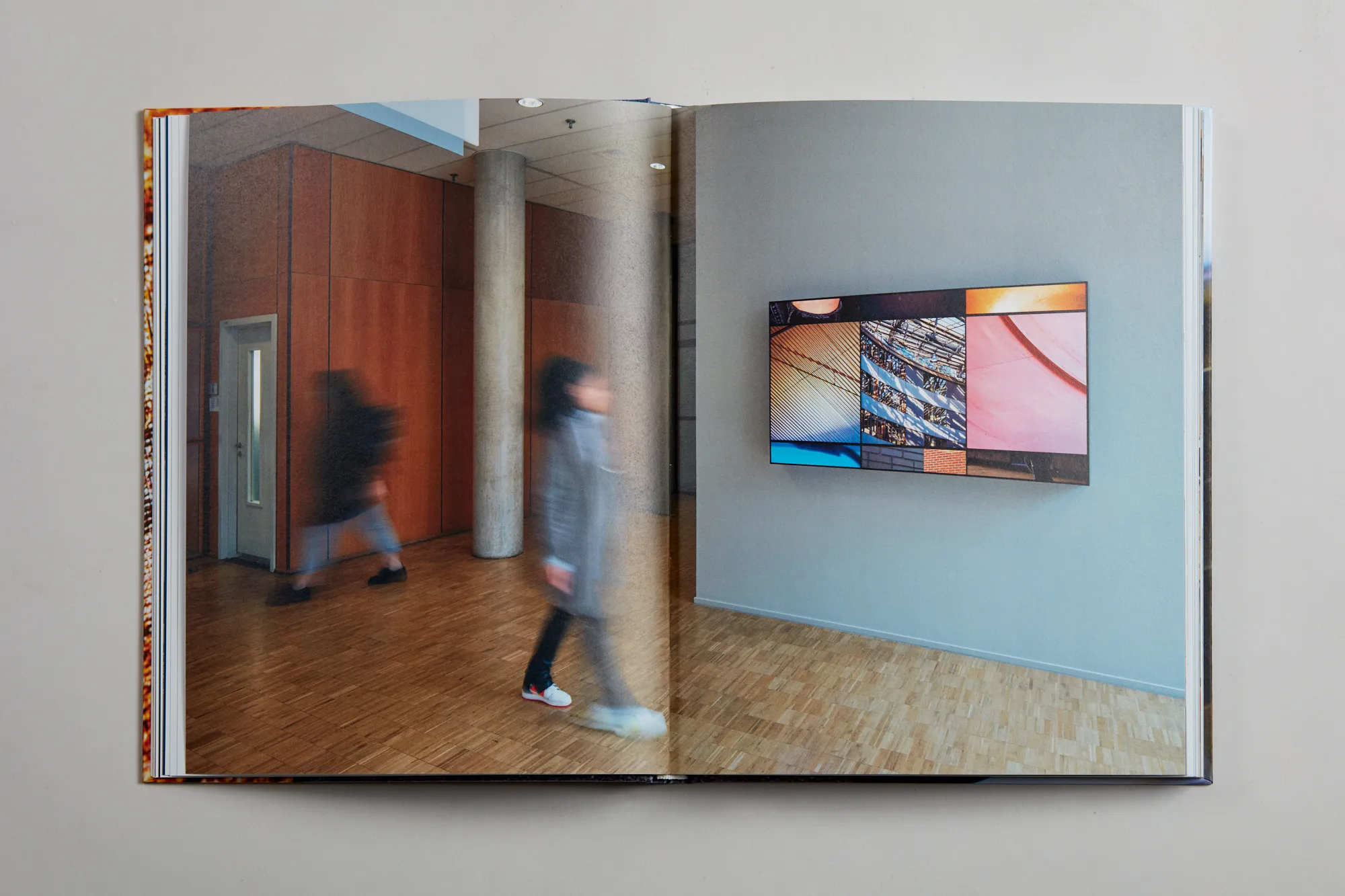
“I see The Bubble every day. It’s the first, and often the only, work of art that I see.
My day is largely routine, and following the news and checking Instagram are a part of that. Those feeds are of things which I might find interesting, and this art work has that too, it provides a similar sort of stimulus to my feeds.I find it difficult to walk past The Bubble without looking at it. Sometimes you see images that you have seen before, but because they are always being shown in different combinations it’s still new each time.
It has a lot of recognisable elements, which makes it seem familiar. On the other hand, many of the subjects have been made abstract, so you cannot always determine what they are, that makes you curious… What exactly is that?It gives you an uneasy sense of ‘fear of missing out’, because you may be about to miss a combination that might really appeal to you. I think that’s something really cool about it.
The idea that the combinations are determined by an algorithm appeals to me. With Spotify, for example, you can more or less follow the algorithm, but with this work, it is far less transparent, and that draws you in as well. Is it just me that sees particular themes in combinations of images? Maybe this feed has been personalised… but for whom exactly? How does the algorithm see these photographs? Will I ever be able to figure out what the principle behind the order is?I know that it’s interactive and that it responds differently when you stand still in front of it, but often I’m on my way to somewhere and I don’t take time for that.
Actually I would like to stand still in front of all the art works in the building… I’m continuously being confronted with my own haste, and I often ask myself, “Why are you always in such a hurry?” The way this work reminds me of that each day, gives me mixed feelings.The Bubble belongs in my own bubble because it forms part of my daily routine. At the same time it also belongs in other people’s routines. There is a realisation that everyone has their own feed, their own story. That makes me feel more connected to other people, a feeling of empathy, not with an individual person, but with a group.
Those are rare moments when you realise that absolutely everyone has their own story… that there are so many different experiences. We often go through life as if our own perspective is the only one, but sometimes there is a moment when you realise briefly that it isn’t that way.
Then you realise that the people with whom you are sitting on the bus, also woke up next to someone, or that they didn’t. This work evokes such moments.Chris Detweiler, lecturer in philosophy and professional practice, commenting on The Bubble, by Johan Nieuwenhuize
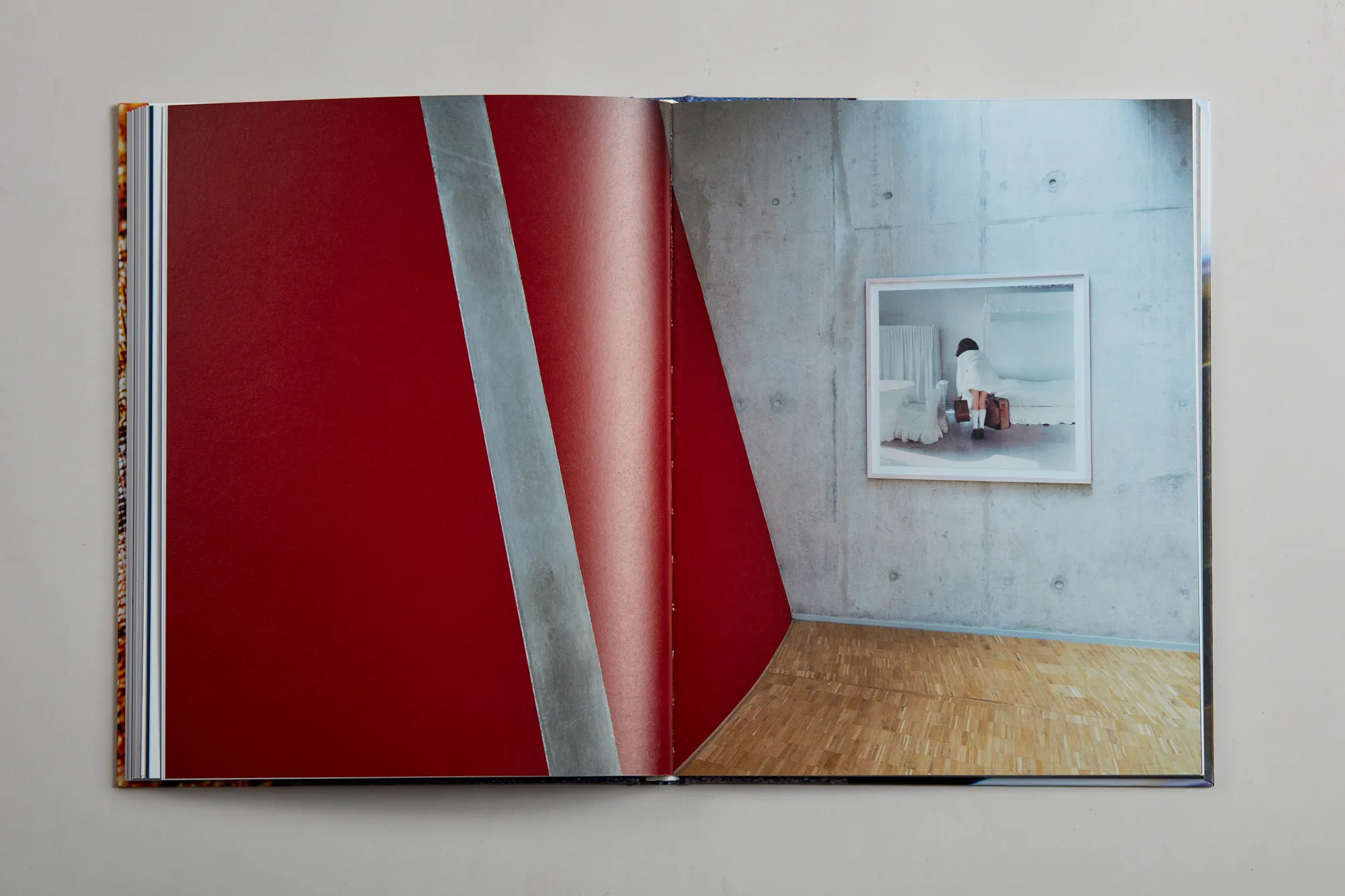
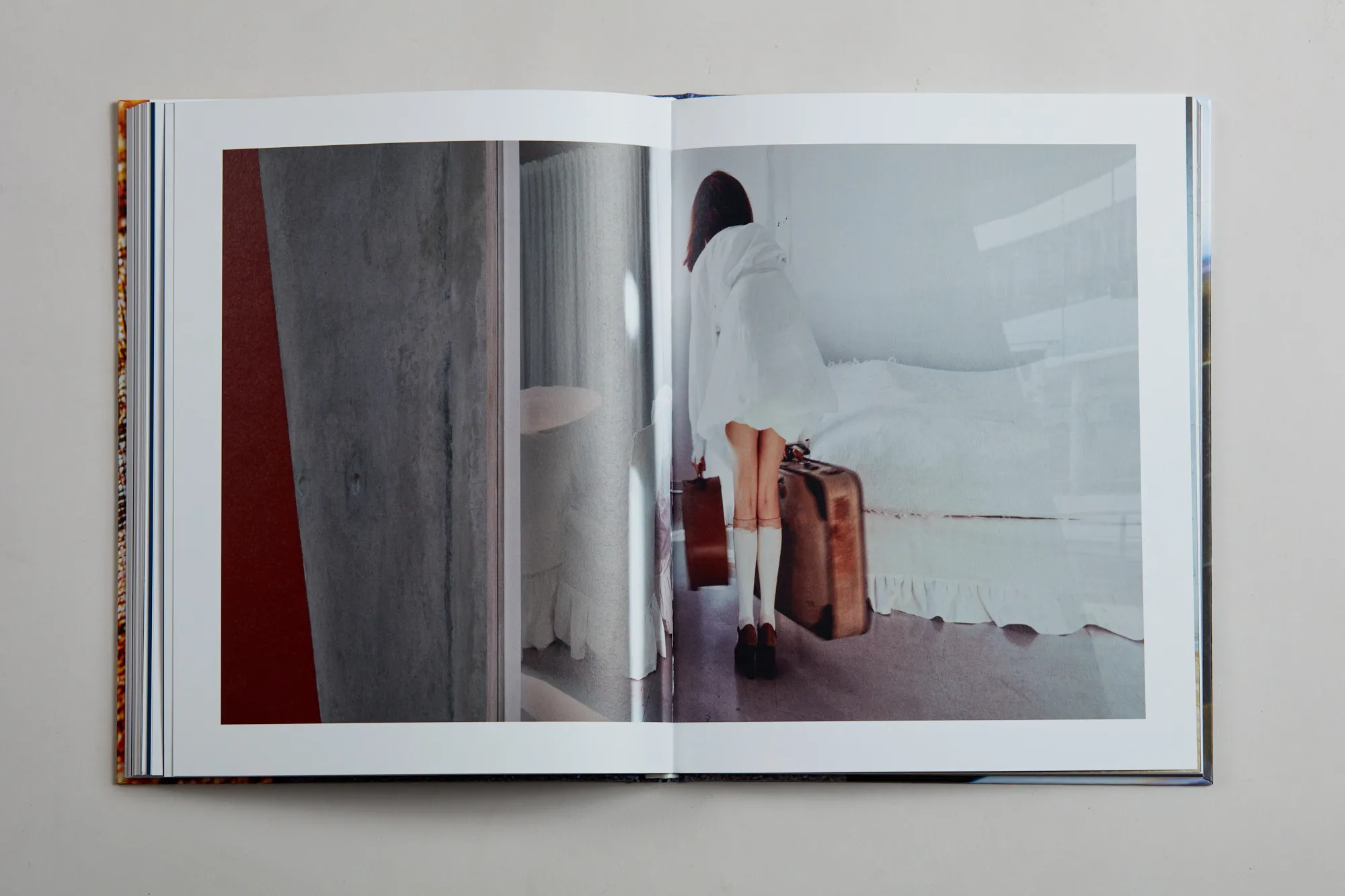
“When you go up the stairs you can see that work out of the corner of your eye. At first it appears completely innocent with all that white, but it isn’t. You just have to look at it – it’s an absolute eye-catcher.
It reminds me a little of Hans Belmer’s work, there is something erotic about it, something is wrong, that’s why it reminds me of his doll photographs. I don’t know if it’s a living girl… Who is to say that this isn’t just a doll?
When you get closer to the work, you see the lines on the back of the legs. That throws me. I’m not sure what to think. What is this? What is it about? I don’t think they are prosthetics, they would be attached differently. And then the title – A Slower Life? Liza gets under your skin very subtly! Your voyeuristic tendencies have the rug pulled out from under them, you are put on hold. The mildly erotic appeal comes to an end, and then the surprise and admiration start. That is precisely what art does!”Anja Berkelaar, lecturer researcher in commercial economy talking about the work of Liza May Post

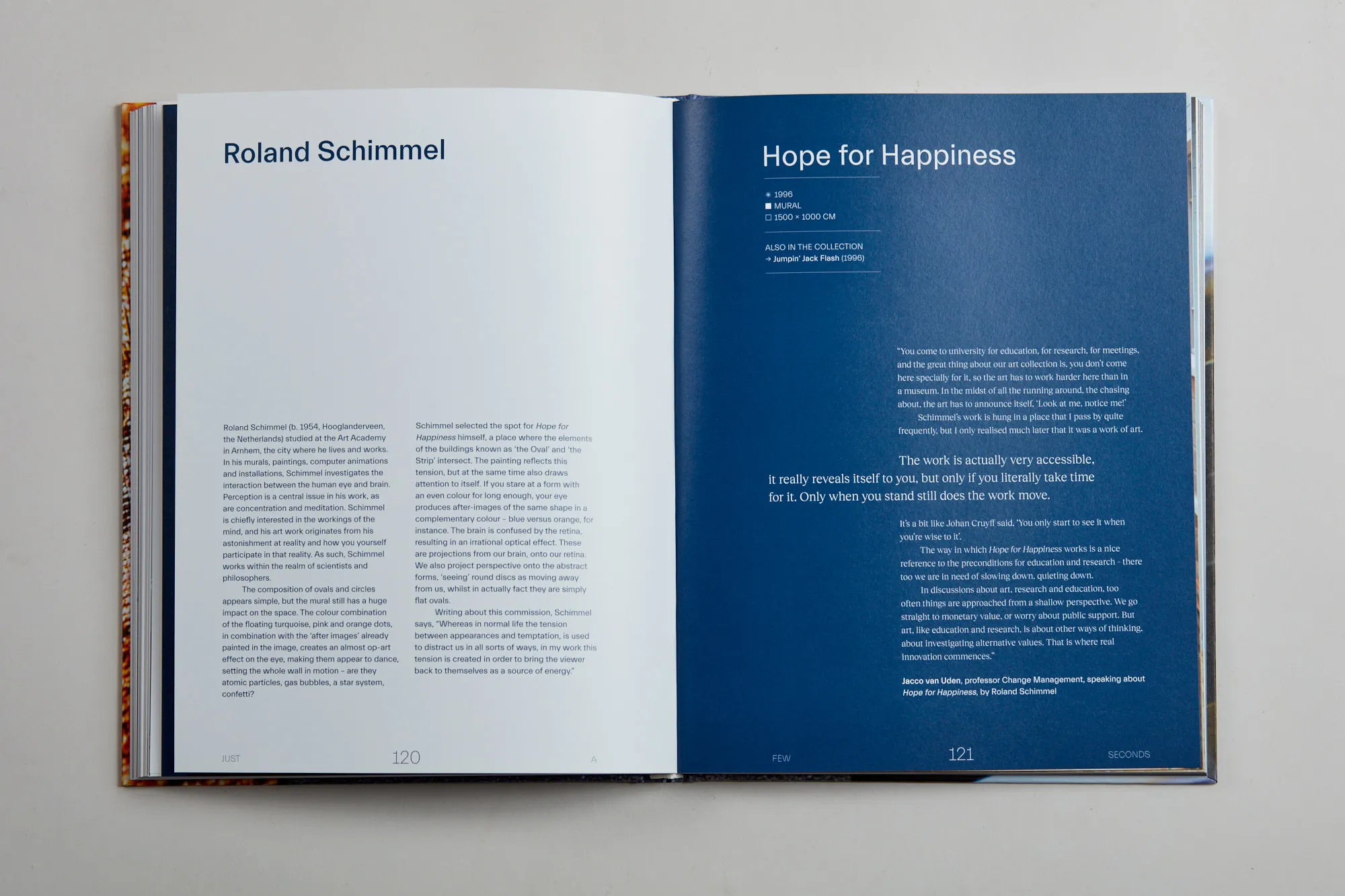
“You come to university for education, for research, for meetings, and the great thing about our art collection is, you don’t come here specially for it, so the art has to work harder here than in a museum. In the midst of all the running around, the chasing about, the art has to announce itself, ‘Look at me, notice me!’
Schimmel’s work is hung in a place that I pass by quite frequently, but I only realised much later that it was a work of art. The work is actually very accessible, it really reveals itself to you, but only if you literally take time for it. Only when you stand still does the work move. It’s a bit like Johan Cruyff said, ‘You only start to see it when you’re wise to it’. The way in which Hope for Happiness works is a nice reference to the preconditions for education and research – there too we are in need of slowing down, quieting down. In discussions about art, research and education, too often things are approached from a shallow perspective. We go straight to monetary value, or worry about public support. But art, like education and research, is about other ways of thinking, about investigating alternative values. That is where real innovation commences.”Jacco van Uden, lecturer, Change Management, speaking about Hope for Happiness, by Roland Schimmel
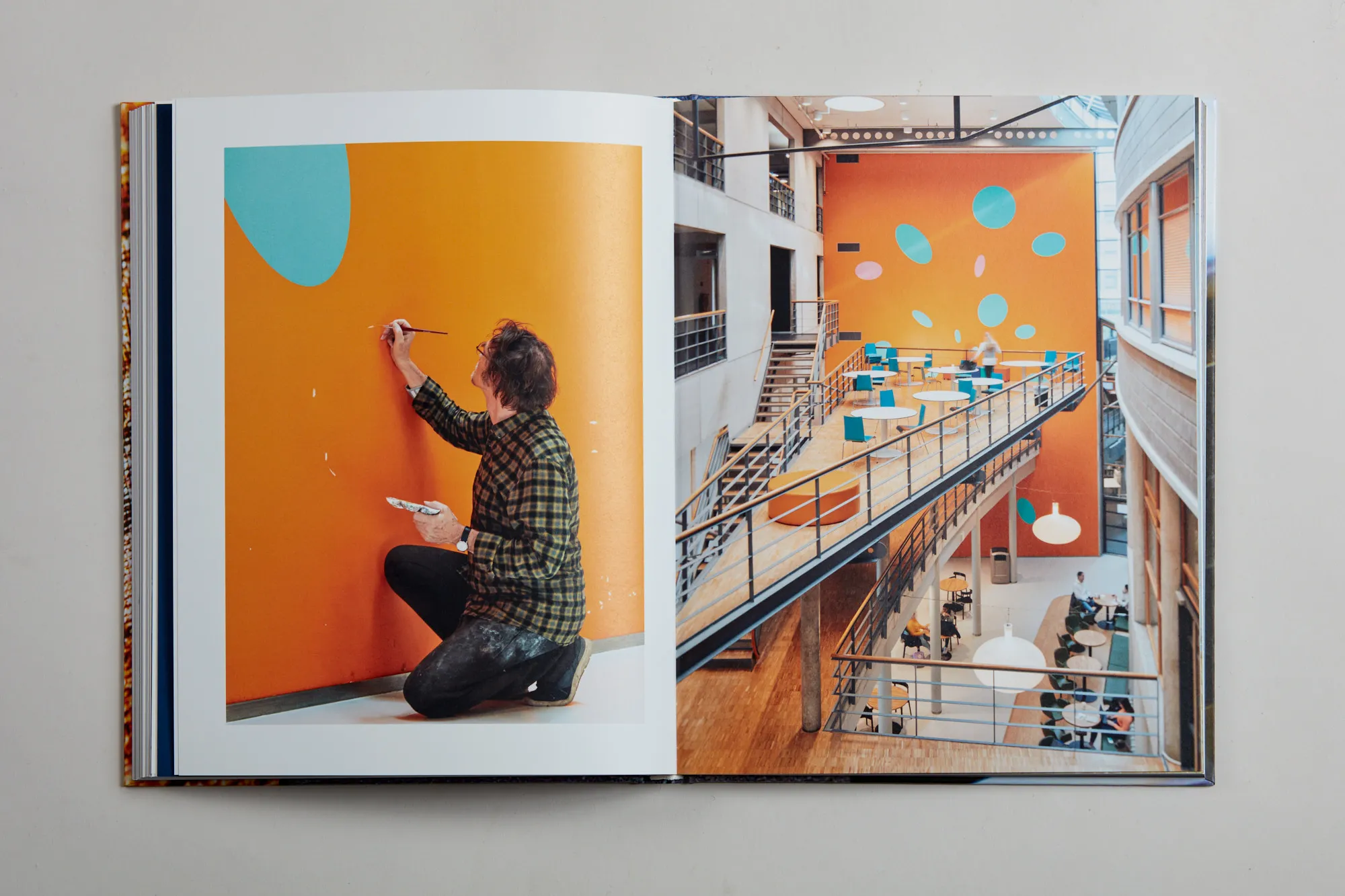
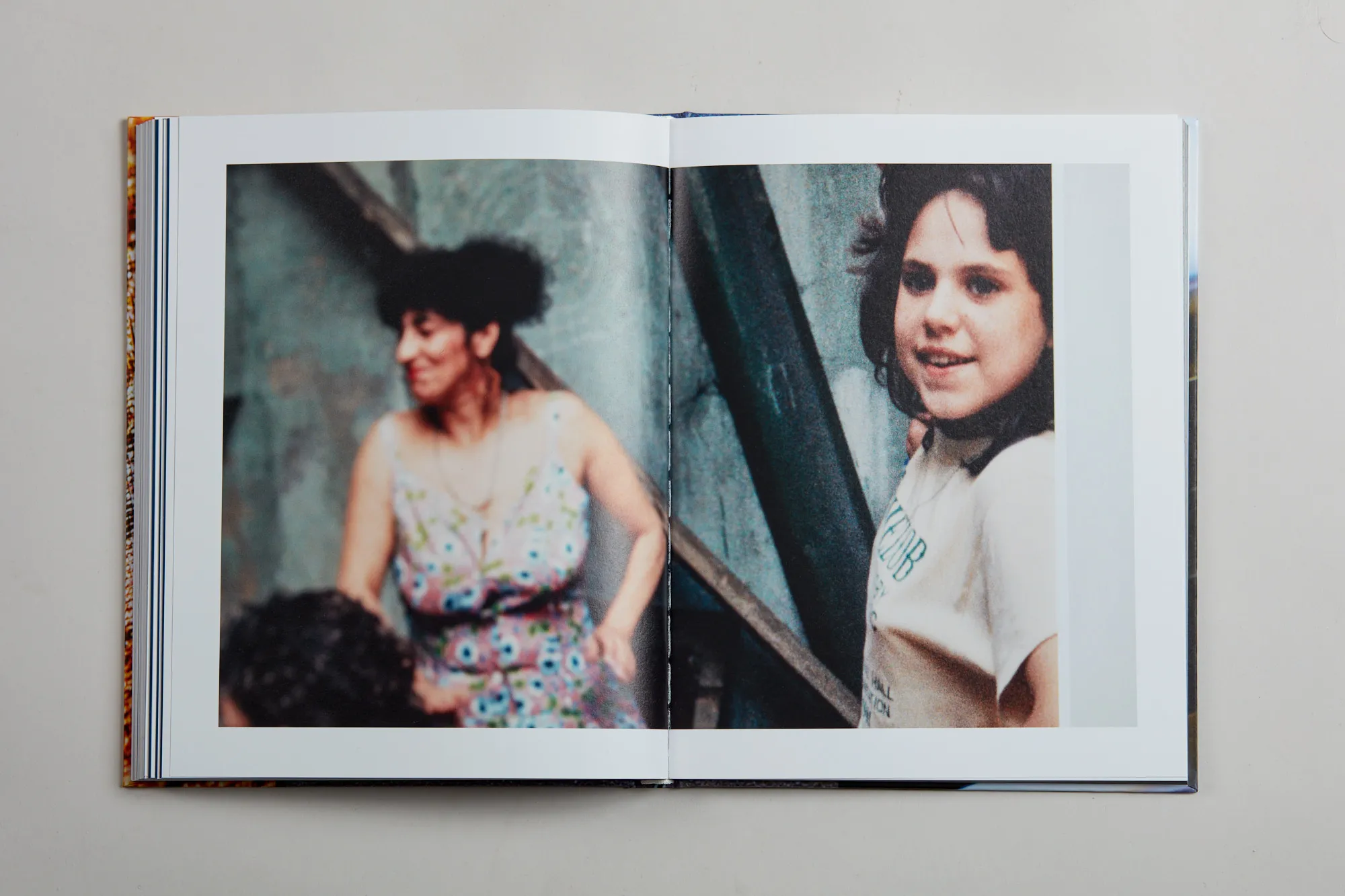
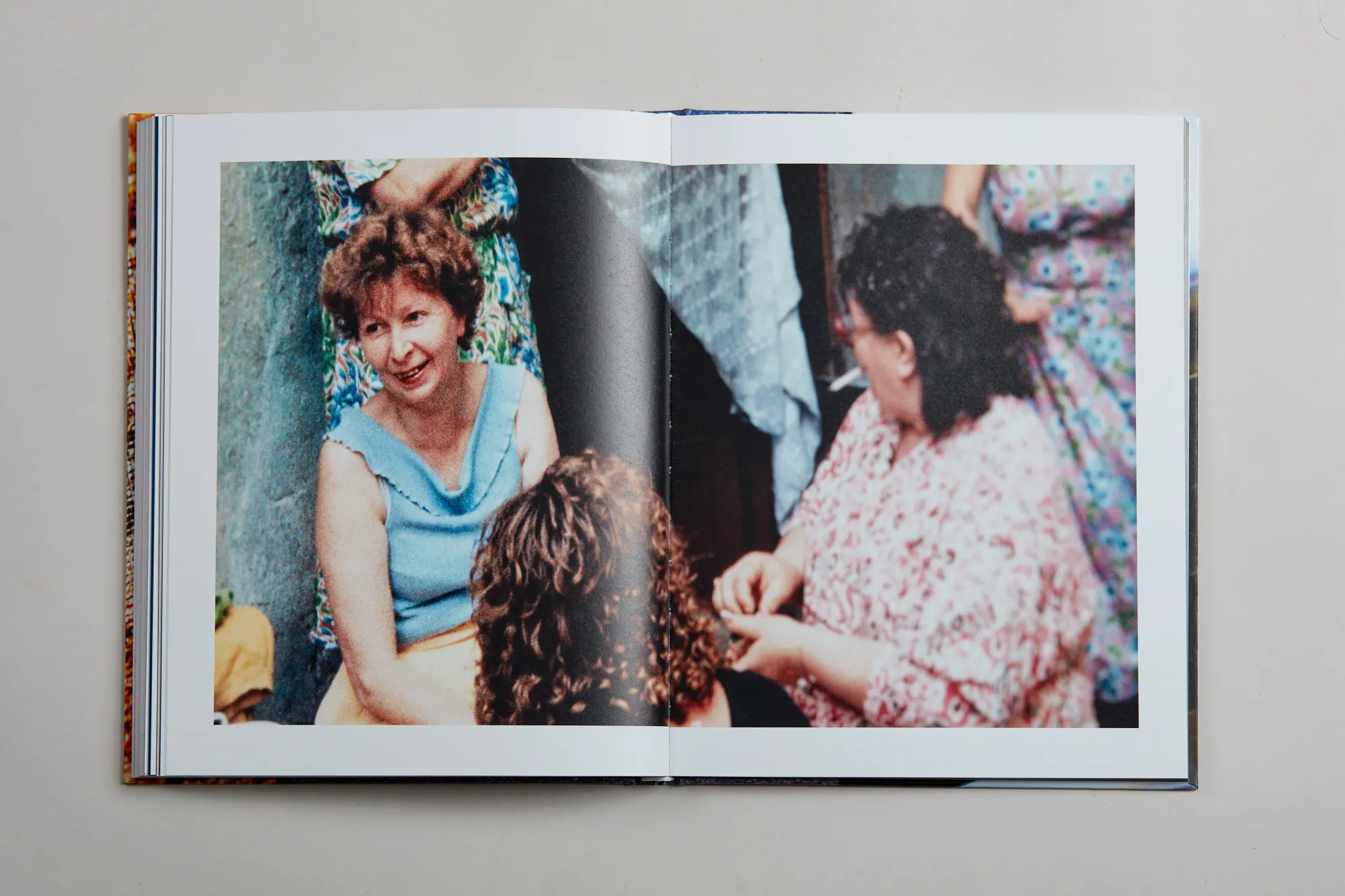
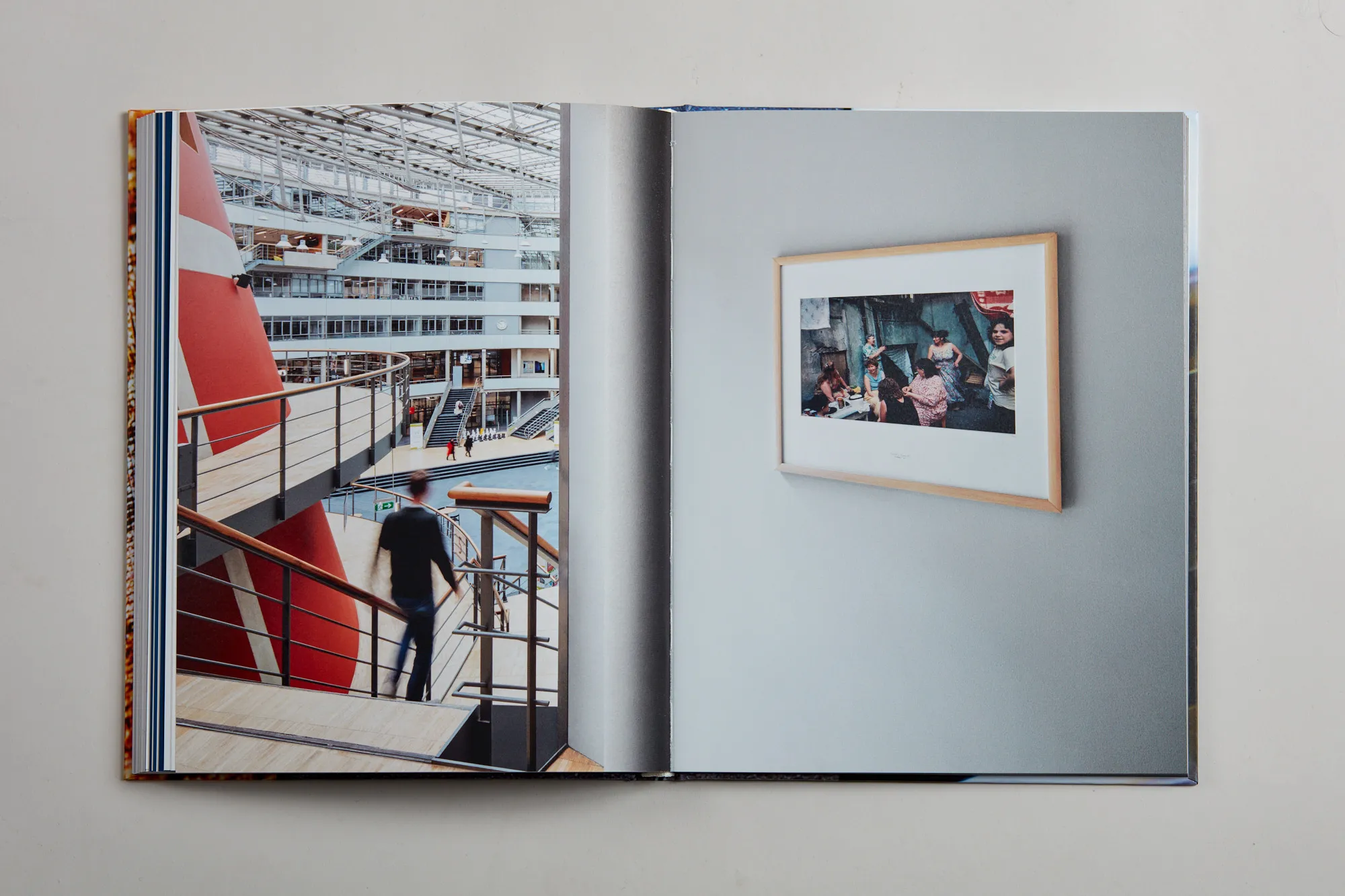
“For me, the photographs that she took in China and Russia are without a doubt her most beautiful work. They strongly bring back the feeling that I had when I was in Russia.
I think she has a really good understanding of what is at play in those communities. You could see that in the exhibition [Beyond the Image, 2020, Stedelijk Museum, Amsterdam], in the documentary about the way she works, she really immerses herself in the community for a period of time.Her work shows a particular moment in time, just after the fall of the wall. The culture surrounding photographic images has changed so much since then – in those days it was seen as an honour to have your photograph taken.
I also love the brutal technique she applies, working with one of those small snapshot cameras, that makes the people who are being photographed very approachable.
On the one hand, her work is ruthless, she doesn’t hide anything, but on the other hand it is also very empathetic, very loving, towards those people. I find this apparent contradiction very intriguing.”Coen Dekkers, teacher IDE/IPO industrial design, speaking about the work of Bertien van Manen
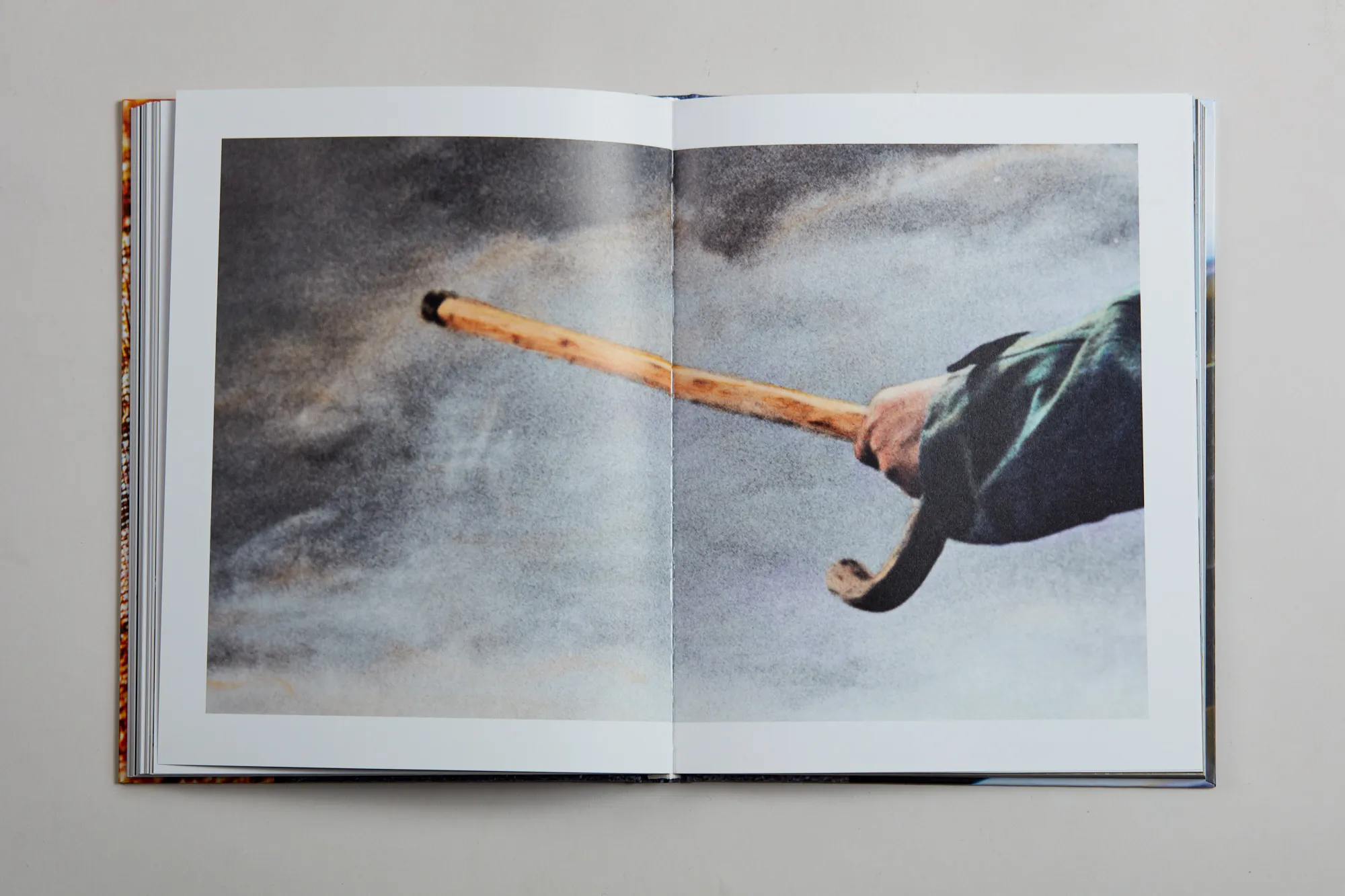
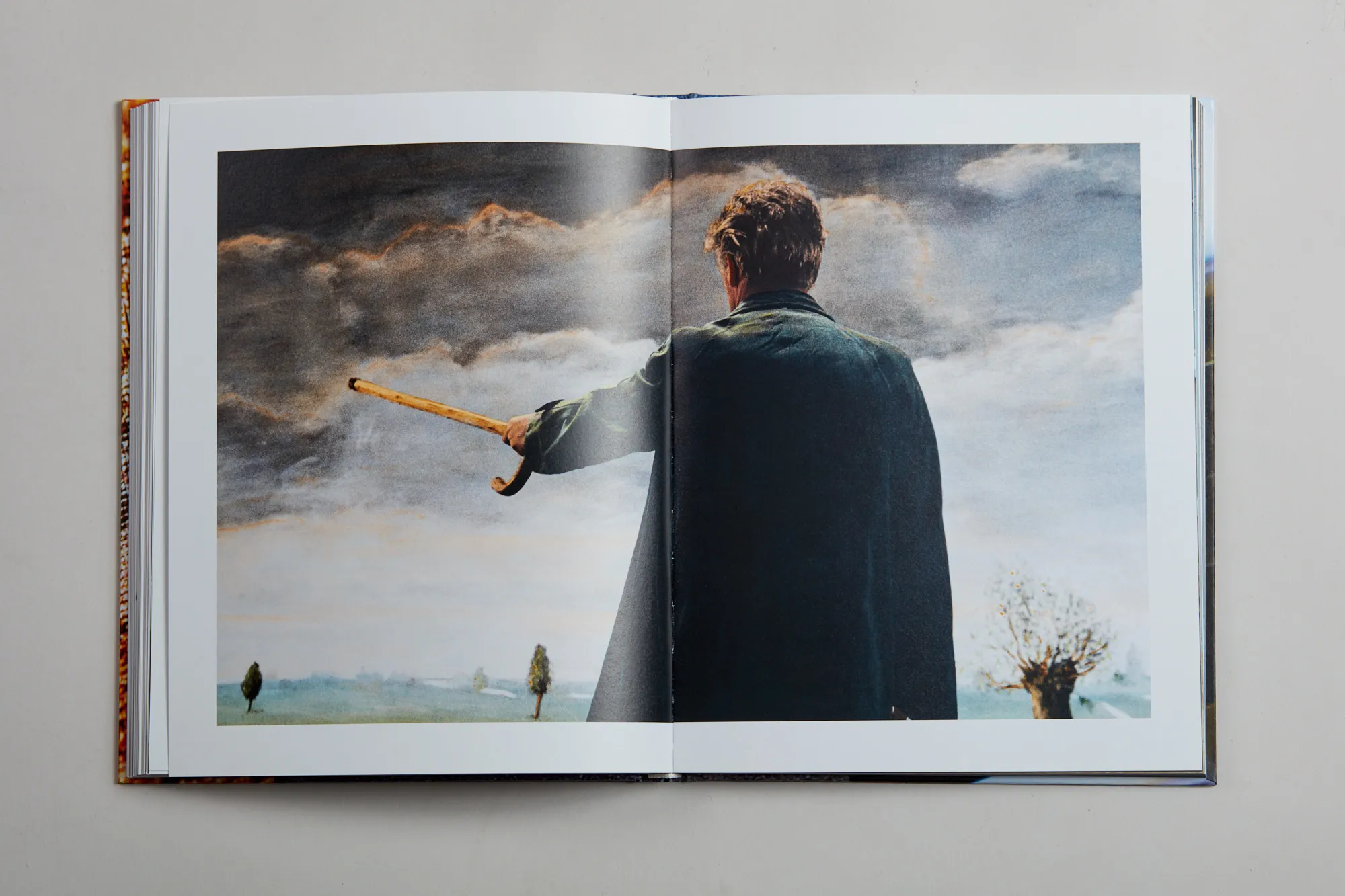
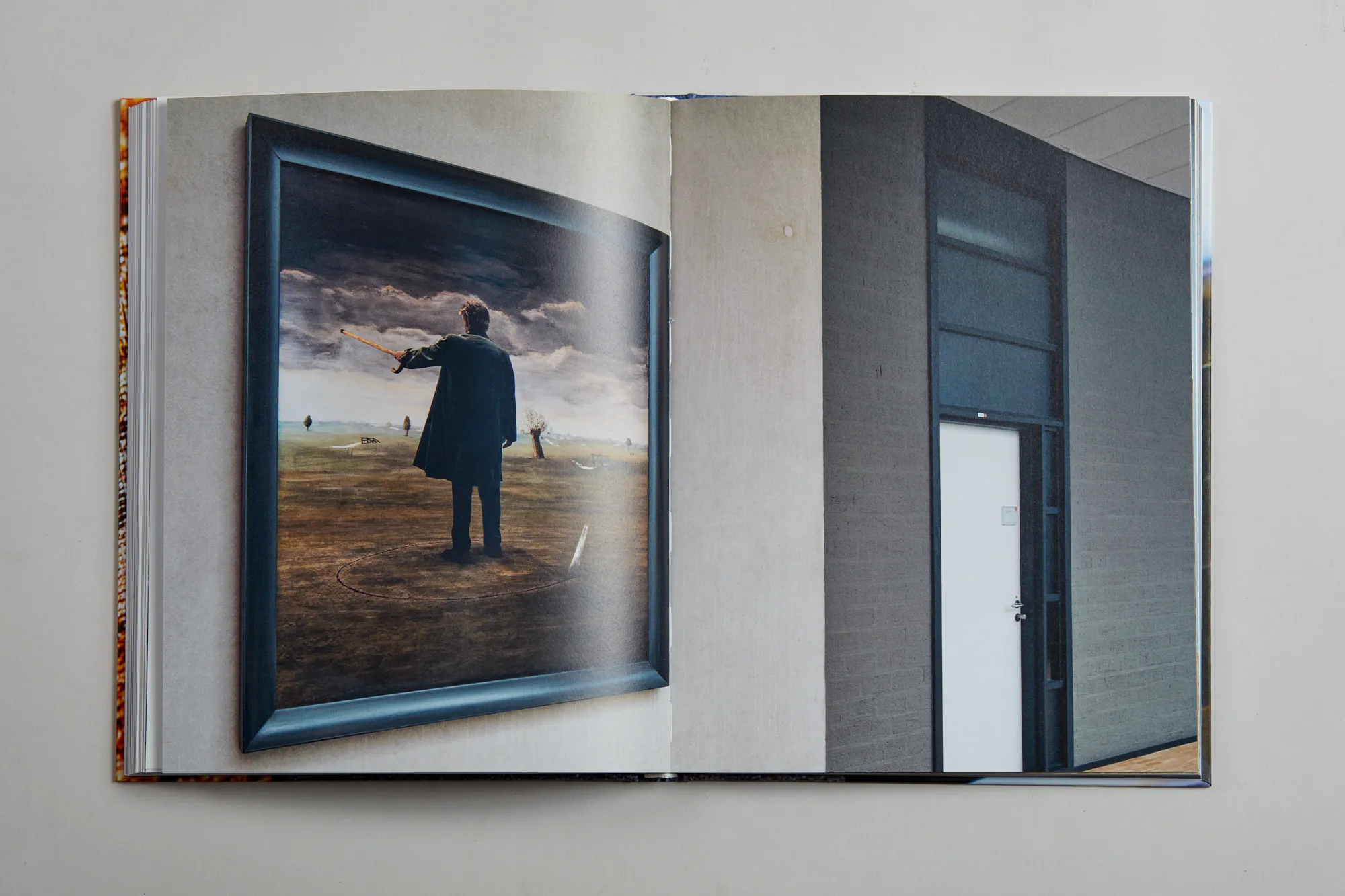
“The man’s journey is not visible in the work. How did he get there, what is he doing there? What is he pointing at? Where is he going? We don’t know, and that really stimulates your imagination.
The work gives you a feeling of uncertainty, as if you have arrived at a certain point from which you have to set off again, without knowing exactly what is going to happen.
The saw symbolises that uncertainty nicely. The man doesn’t see what is happening, whilst it’s happening right under his nose. He has to keep going.
Everyone has their own path to take – that’s what it seems to be saying. You may, you could, but in fact you must choose your own journey.
Art is important to me in any case, not only at college. It might not always be so apparent to everyone, but it is definitely something that connects people, all of us encounter it every day. There is a lot of diversity within the collection, just like there is amongst the students.”Anne Pennock, student of education theory, speaking about Untitled by Teun Hocks
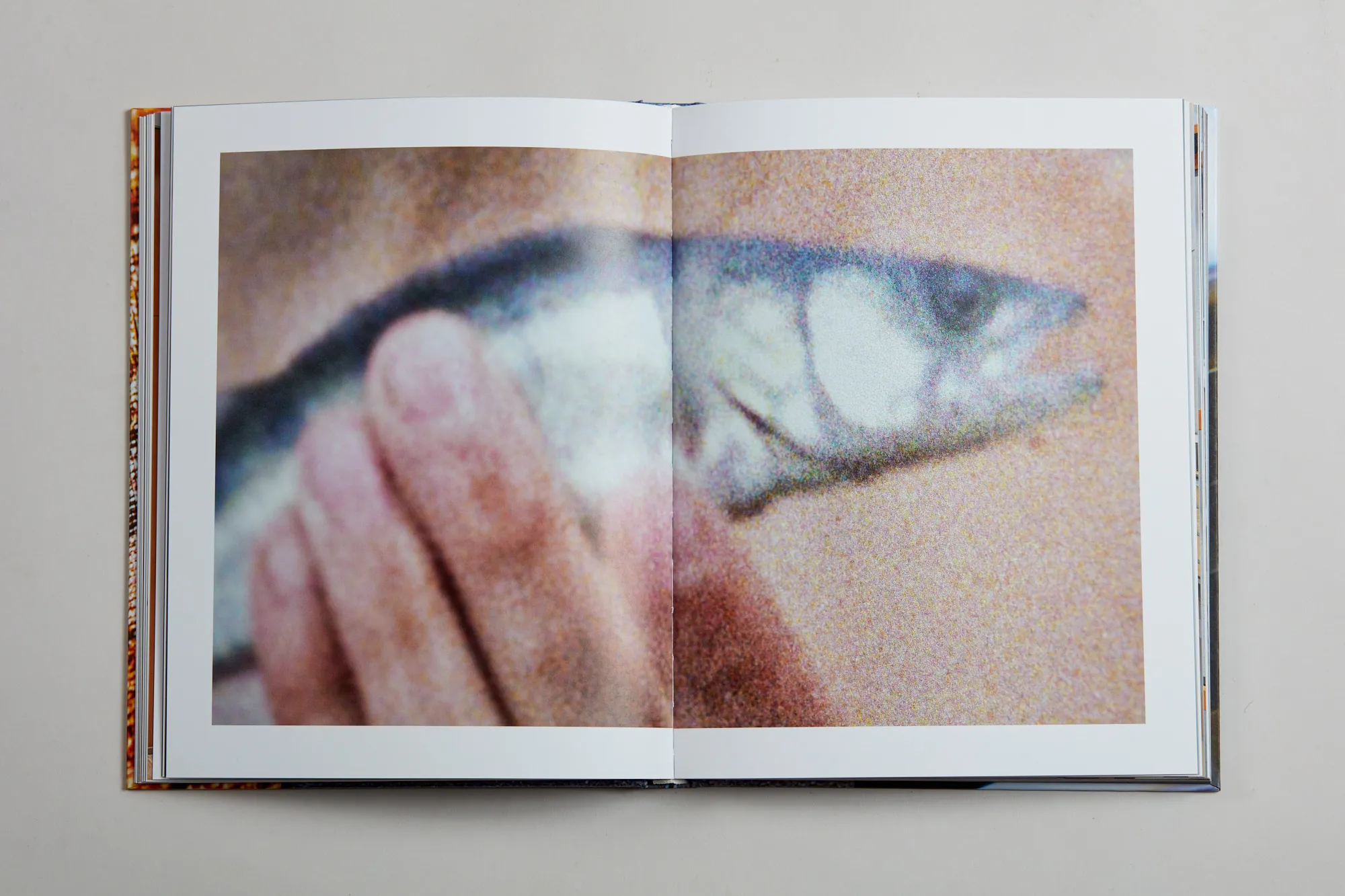
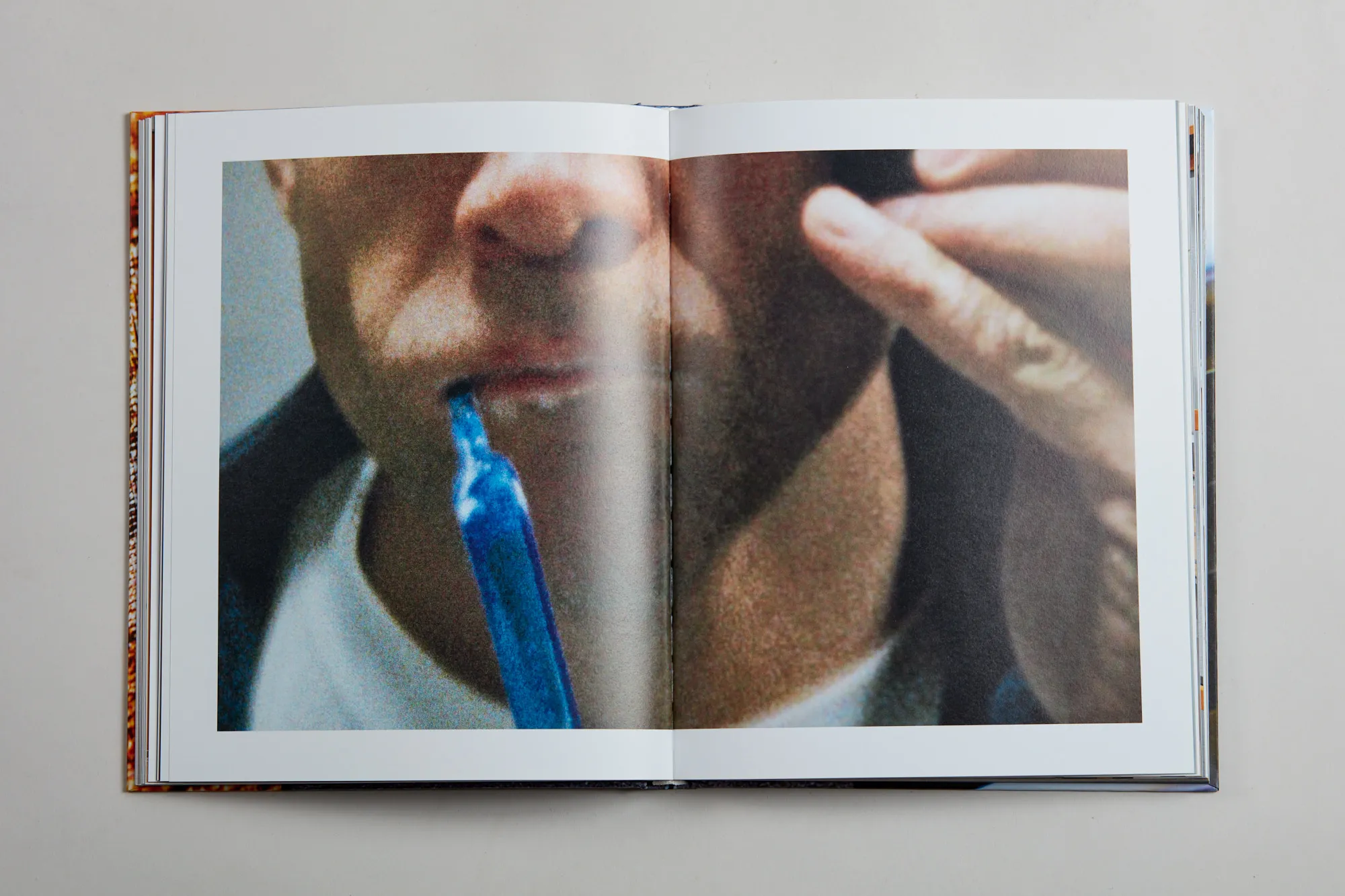
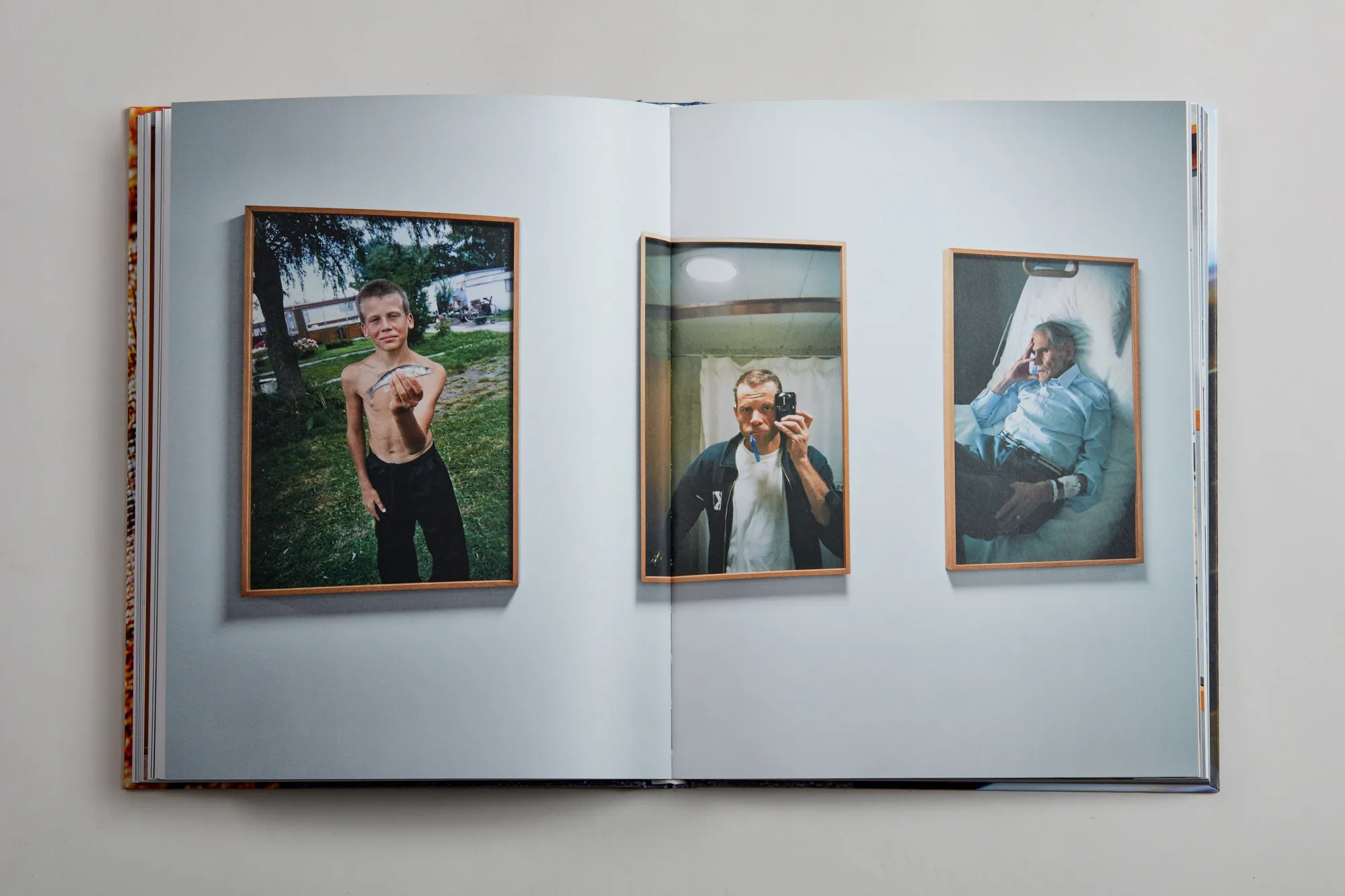
“Our department was being renovated and we very much wanted this work to be hung there once the renovation was finished. I knew Hans Aarsman’s work as ‘photo detective’, all the observation he does, the hunting for details. It has a nice connection with nursing, where it’s very important to make proper observations, you really have to learn how to get a good picture of the patient, to get the feeling of them.
When I look at 3 Generations, that little boy always makes me laugh, he seems so proud of that little fish. He seems so uninhibited, with his whole life ahead of him. In the middle portrait, of Aarsman himself, you can already see more worries. He looks a bit like, ‘I have this job to get done too’, and just gets the photograph taken between doing other things, whilst brushing his teeth. With Pa, I have the tendency to wonder if he’s a bit imbalanced. Will he get himself sorted? What does the future still have to offer him?
The way he’s lying there is typical of the way that patients tend to slump. All the nurses would feel prompted to ask him if he wouldn’t rather be sitting up a bit straighter.It shows a perspective of the future whilst at the same time it looks back. It’s really about life. I don’t see this triptych in terms of development or degeneration. For me it shows the reality that becoming older is not easy, but that acceptance does make it easier.
In our profession it’s really important to keep taking into account the person opposite you.
This work helps to remind you of that.
I have become really attached to it. The most efficient route to my workplace is not past these photos, but I still walk past there every day, just to have seen them.”Christine Pijnappels, team leader and interim course manager HBO-nursing, talking about 3 Generations, by Hans Aarsman
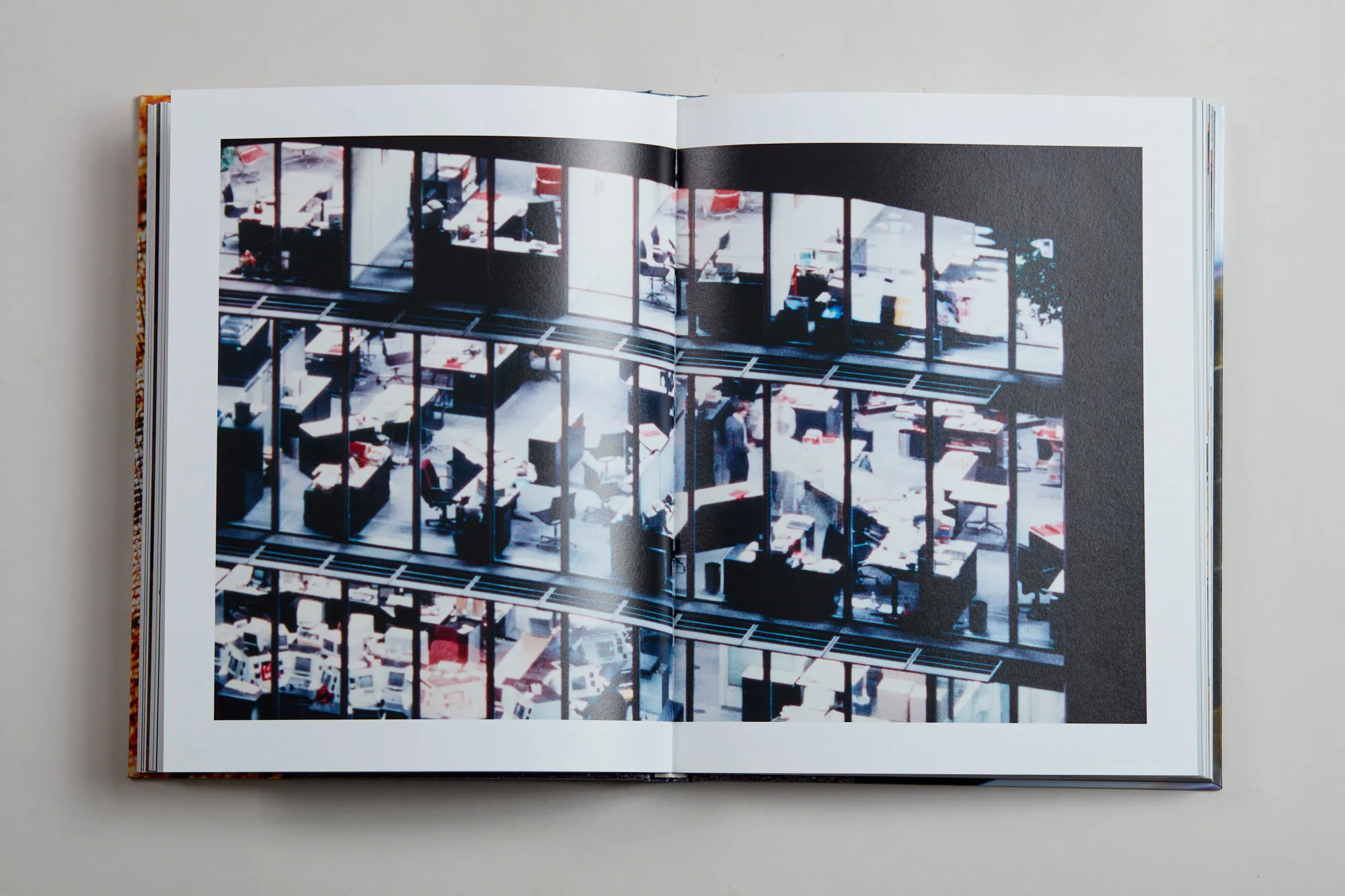
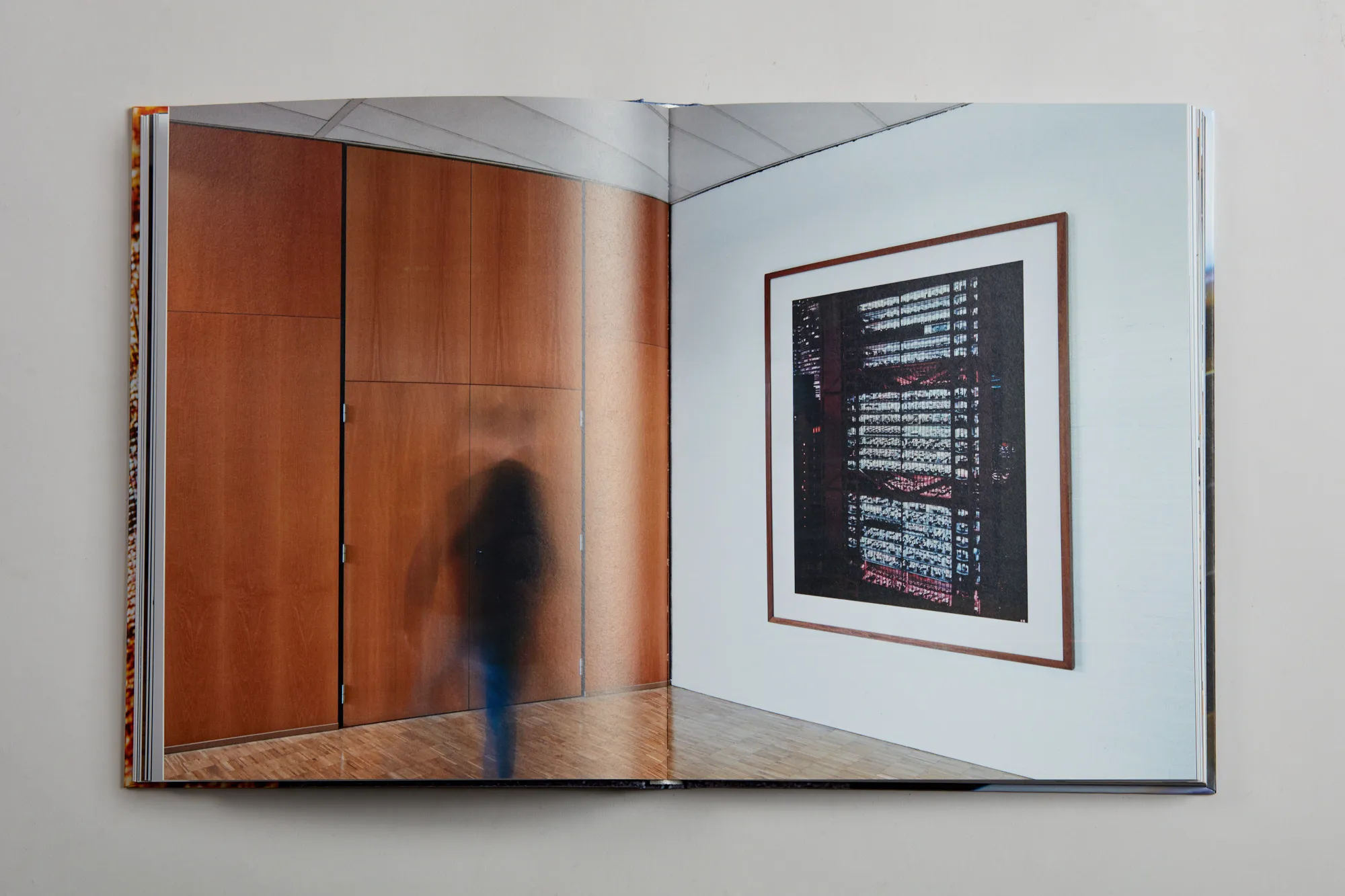
Because of the complexity of the work I have to take my time, it forces me to seriously look. I really want to discover more and more in it, because I am afraid that I’ll miss something. I’m trying to figure out what’s happening, what all those people are doing.
You often have an idea beforehand about what is going on, but when you look closely, it might not be the case at all. Like that man there on the left in that other building. At first he seemed to me to be standing in the kitchen of a high-rise flat, but it’s just another office in an office block.
At first glance or if you’re just passing by, you wouldn’t say the work is that old. It was made in the year I was born, so it started me thinking about how I myself work, about how everything works, and about how, over the years, work has changed.
Is it showing what I studied to do? Human Resource Management was invented for this type of work, but I really don’t envisage myself sitting there.
Kaat Boevé, alumnus, and now teacher, Human Resource Management, looking at Shanghai Bank by Andreas Gursky